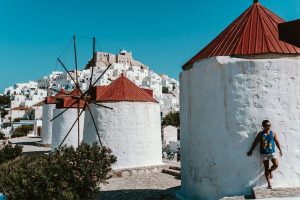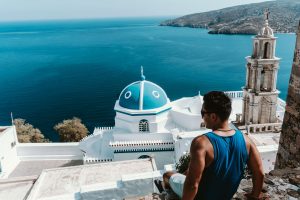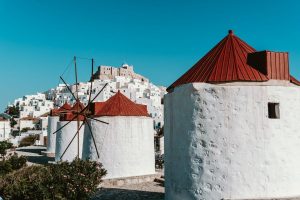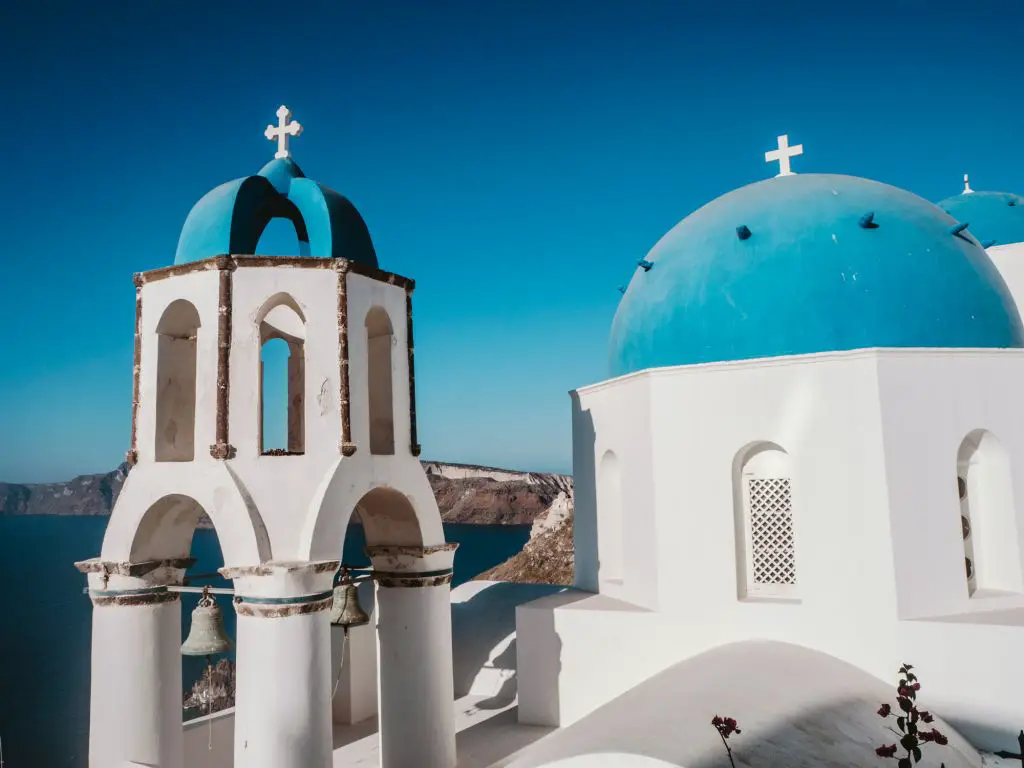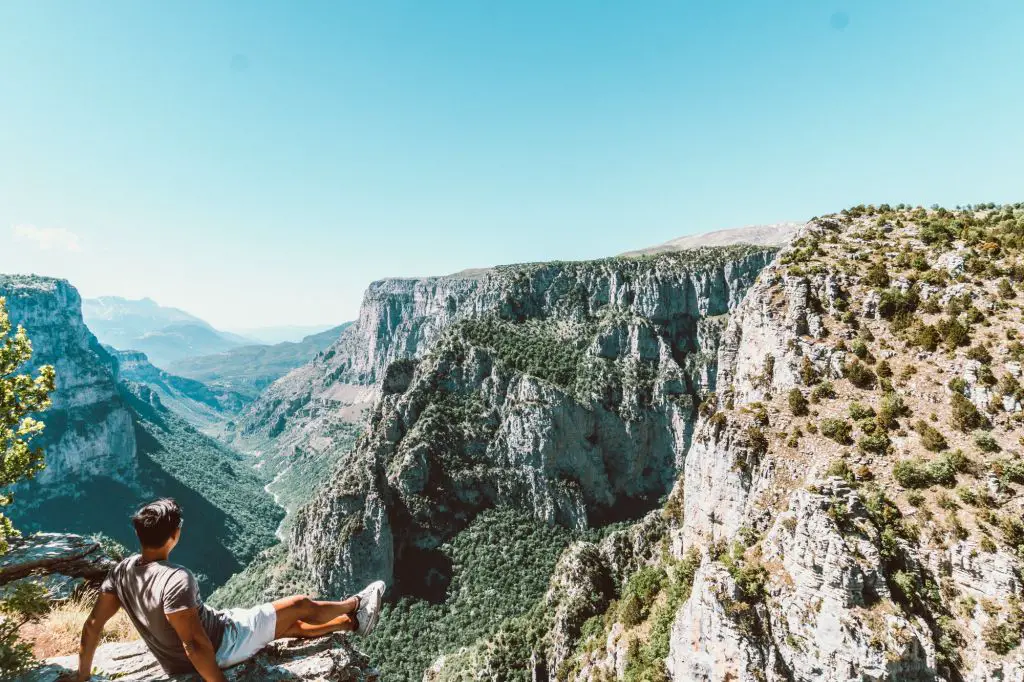I spent just shy of two months travel around Greece in the summer of Coronavirus. Traveling during COVID was quite the experience but I’m very happy I was able to do it especially since the amount of tourists was a fraction of normal times. I visited the Ionian islands (Zakynthos and Kefalonia) as well as the capital of Athens before moving to the Cyclades.
I spent most of my time traveling through the Cycladic islands visiting ten different islands and subsequently acquiring a ton of knowledge about what to expect from traveling in the islands.
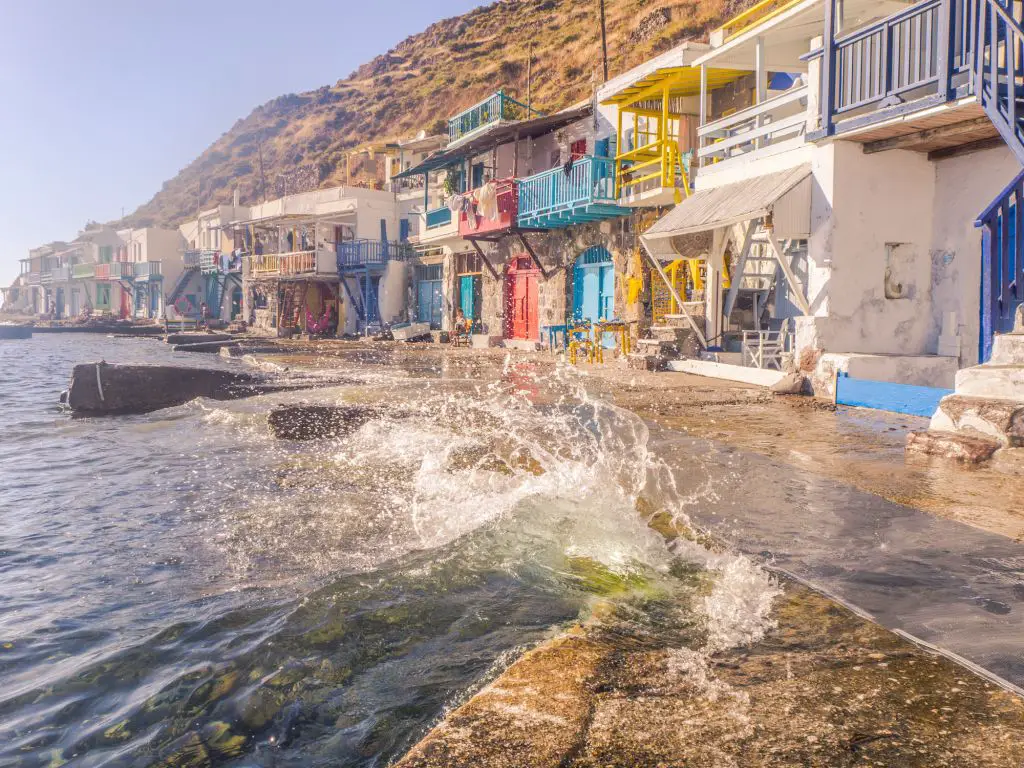
It was quite the special experience visiting these iconic islands with their impossibly picturesque white houses, blue doors, cobblestone streets, and pink bougainvillea trees. Hopefully you’ll enjoy it as much as I did and I hope this guide helps you along your way!
Greece is my favorite country in Europe and I traveled extensively through the country. If you need inspiration for other parts of Greece, make sure to read my Ultimate Greece Travel Guide that details everything yo need to know about Greece and the places I’ve been to.
Traveling in 2023: Note that I suspect tourism and crowds to be monstrous in the summer 2023 season. Book well in advance and prepare yourself for huge crowds of tourists coming from America and China. If possible, plan your trip from mid September onwards!
What are the islands in the Cyclades
As you’d expect, there are a ton of islands in the Cyclades. There are so many islands that are inhabited and uninhabited that it would take you many months to visit them all.
I was able to visit ten of them and felt like I got a very good taste of it.
In total there are the following islands:
- Kea
- Kithnos
- Tinos
- Syros
- Mykonos
- Naxos
- Paros (and Antiparos)
- Serifos
- Sifnos
- Sikinos
- Milos
- Folegandros
- Ios
- Amorgos
- Santorini
The islands with links are the ones I visited and subsequently you can read my detailed guides for each of those islands if you are planning a trip yourself!
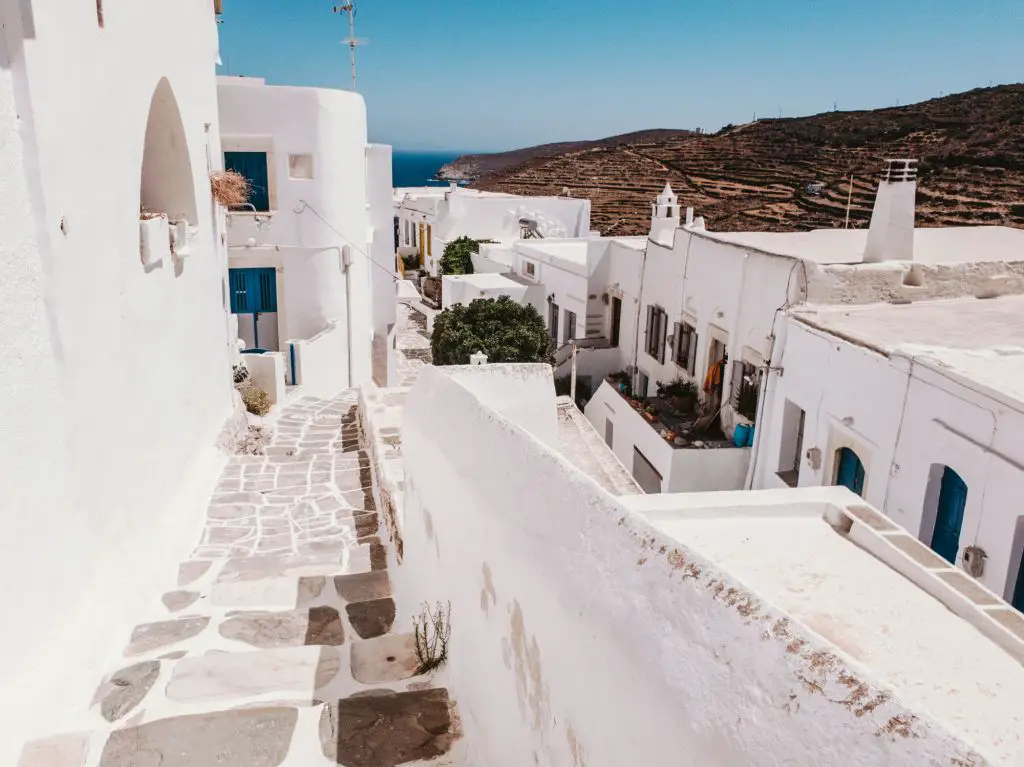
If you have limited time and want to only visit a few islands, read my list where I personally rank the best Cyclades islands.
When is the best time to visit the Cyclades
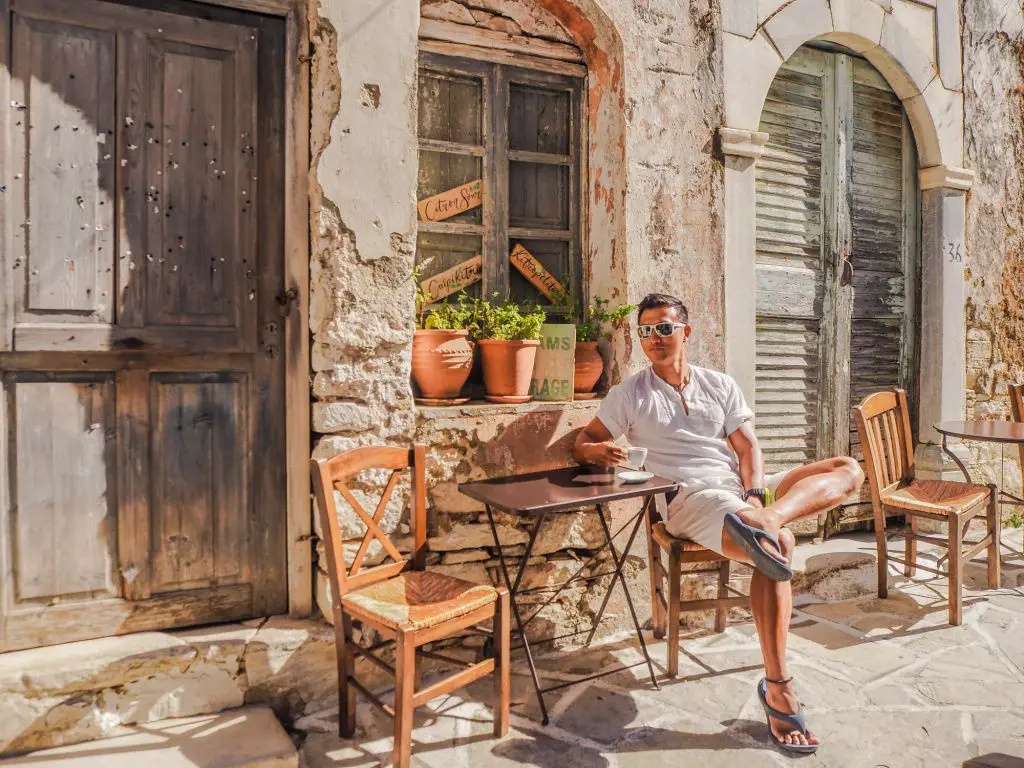
The Cyclades has very favorable weather with a mild climate year round. The summers are hot but never overly so because you always have the ocean breeze and the winters are never super cold. It rains very little in the Cyclades with hardly any rain at all in the summer months.
Make sure to read my best time to visit Greece post to better understand when to visit!
Weather in the Cyclades
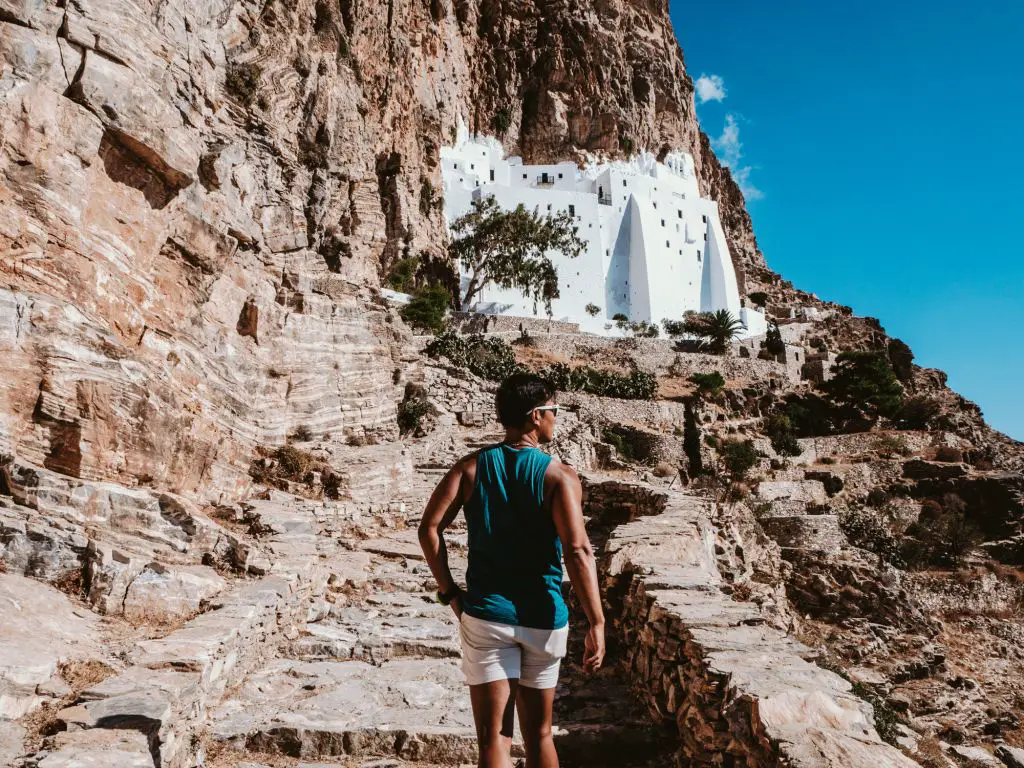
The Greek islands enjoy a very comfortable climate year round. The islands do have seasons but they are not extreme in that winters are never super cold and supers are not super hot (but still hot). It does not get very humid here and the amount of rain per year is minimal compared to other parts of Europe.
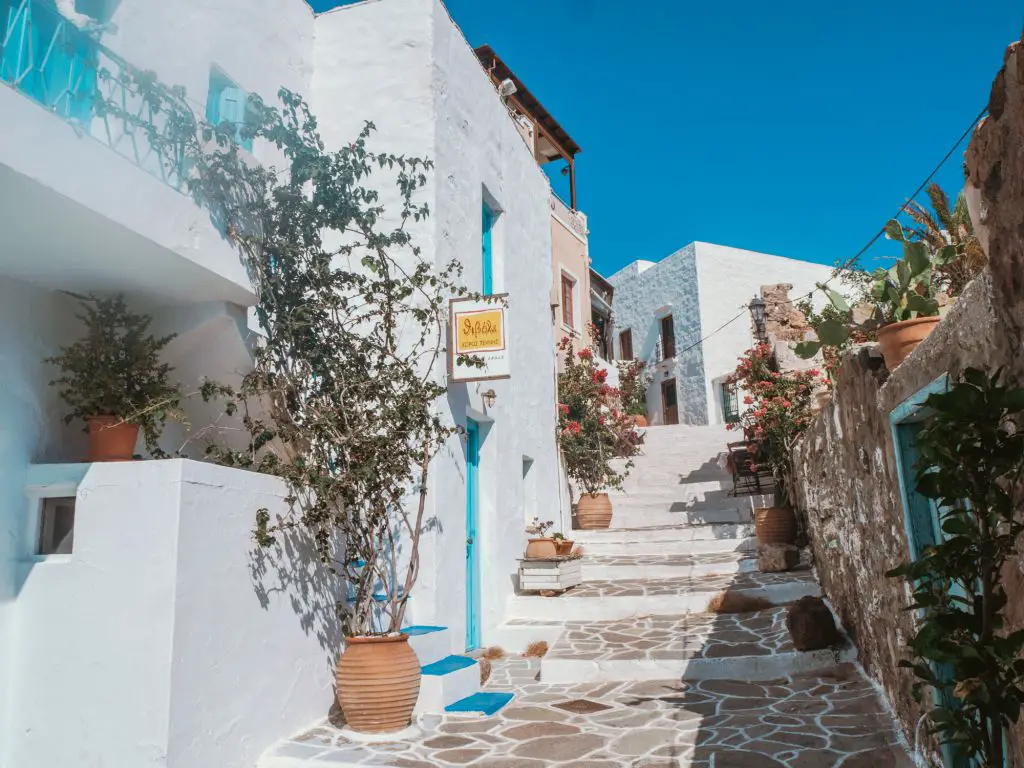
As I visited during the summer months, it was 30-35 degrees during the day and 25 degrees at night. In the fall and spring, you can still expect temperatures to be in the 20-25 range with plenty of sun. In the winter months (if you decide to come during off season), the temperature is still a comfortable 15-20 degrees during the day but with more clouds and higher chance of rain.
In the summer months, it can get super windy and for days at a time. In Mykonos, I thought my helmet would rip off my head at times while driving my ATV.
Peak Season in the Cyclades
The peak months are from the end of June to the end of August. These are the months where the islands can be extremely packed with tourists from all over the world coming in along with cruise ships.
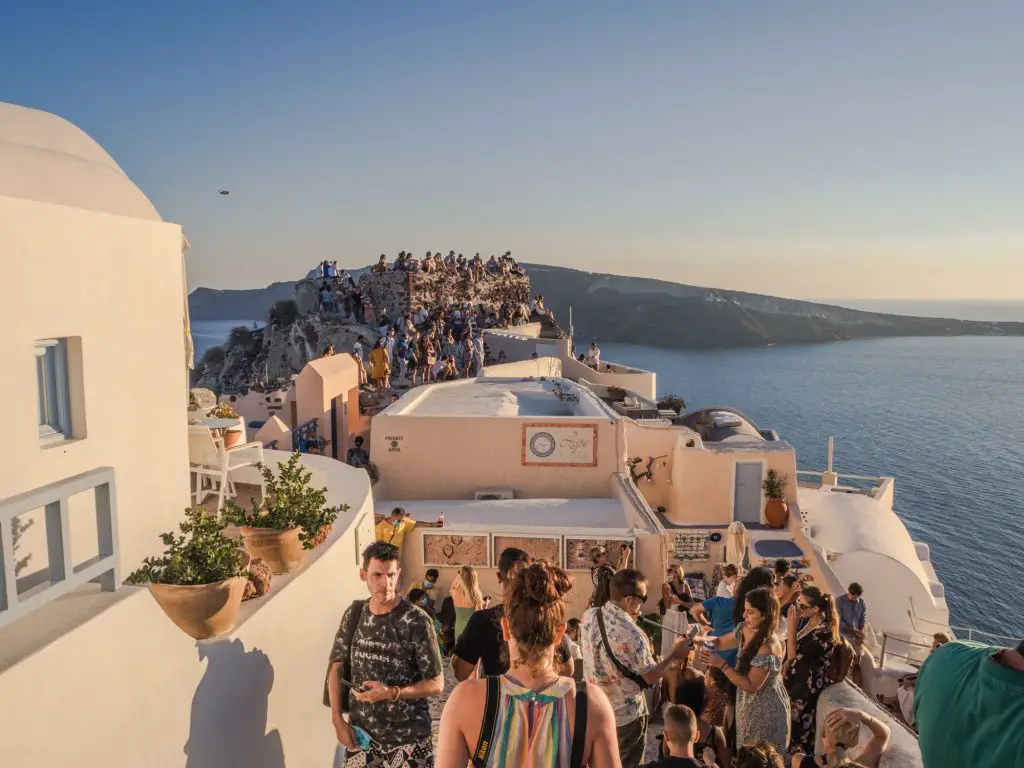
The prices are also the most expensive during these months as much of the revenue generated in this period subsidize the lack of earnings in the other months. If you’re looking for a party and to be with lots of different people, then this is your period to visit. Restaurants will be packed, beaches will be busy, and there will be plenty of life here for you to enjoy.
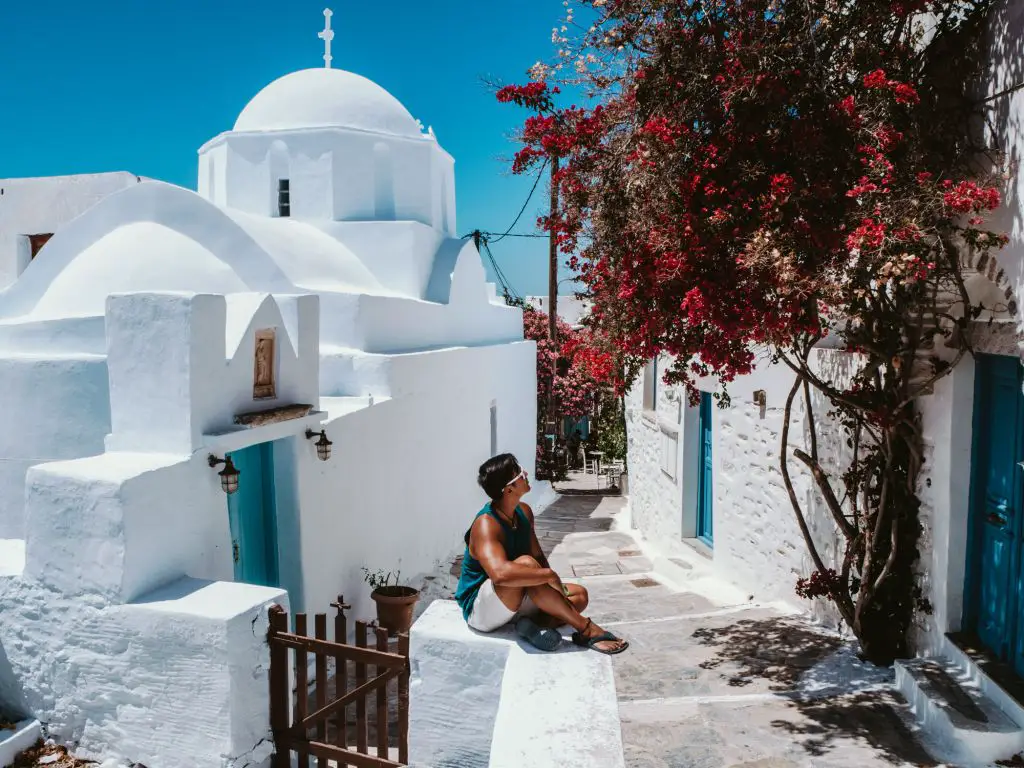
If you are more into the idea of having a beach to yourself or exploring without the crowds, absolutely avoid coming in the summer months. Especially avoid coming during the middle of August around the holiday of the Virgin Mary. The entire mainland of Greece clears out and goes to the islands and these places become absolutely packed. This is the most expensive time to visit as well.
The best time to visit the Cyclades
I traveled around the Cyclades during the time of Coronavirus and in the peak summer months. For the most part, it was never overwhelming because international tourism outside of the EU is largely non-existent. It was still busy especially in August, but was never over the top for me. However, in future years, I think I would avoid coming to the islands in the summer months, especially ultra touristy places like Mykonos and Santorini.

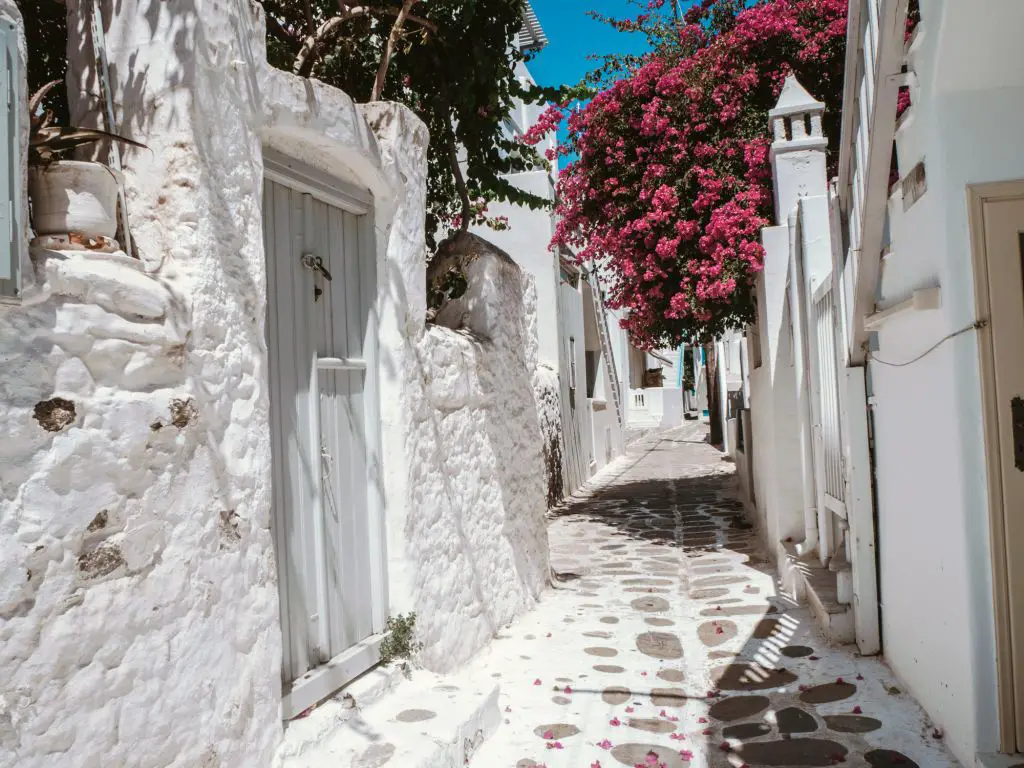
It is simply way too much of a disaster during the months of July and August to even think about visiting. Not only do you pay 50% more, but you’re essentially going to a music festival for that extra money.
The best times to visit the islands in my opinion are mid September to early November, and the months of April and May. The weather is still very pleasant in the fall and spring but not overly hot. Swimming might be too cold for some in these times but that’s a small price for me to pay as I am not obsessed with the beaches in Greece anyhow. In summary, avoid visiting the Cyclades in the summer months like the plague.
Getting around in the Cyclades
Getting between the islands, or island hopping is all done via the ferry system.
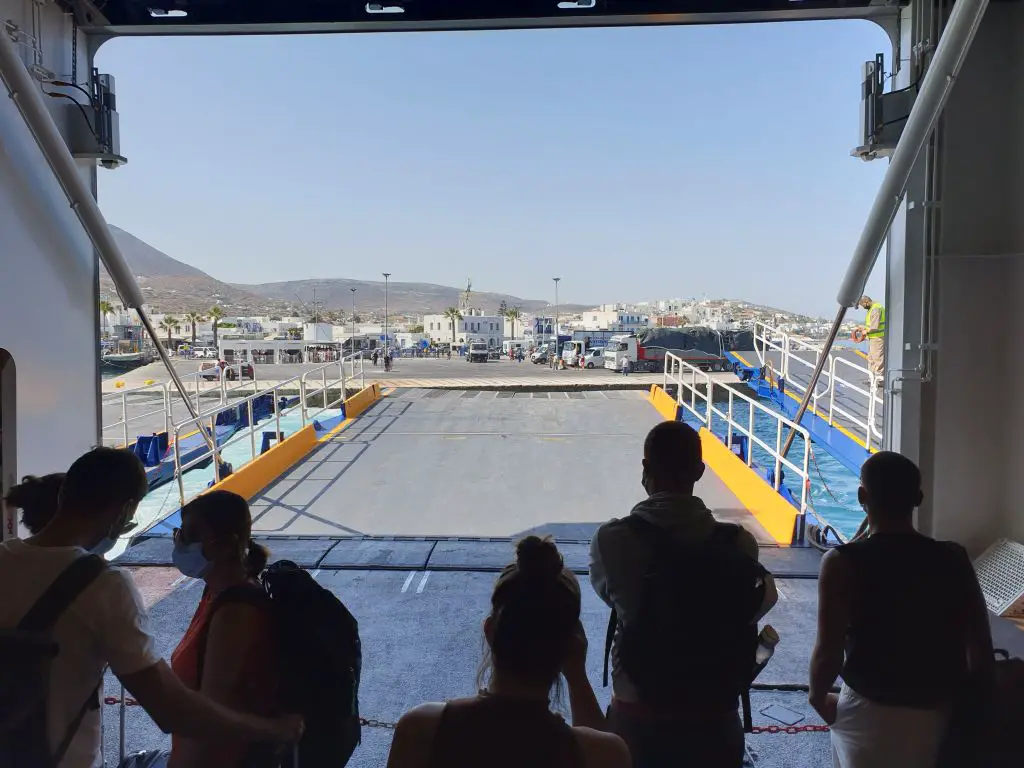
There is a very comprehensive ferry system in the Greek islands, especially in the Cyclades as there are so many of them. I took no less than ten different ferries while island hopping because that is really the only way to get around. There is no way to fly between island to island but rather only regular flights from Athens to islands with airports like Milos, Naxos, Mykonos, Santorini, and Paros.
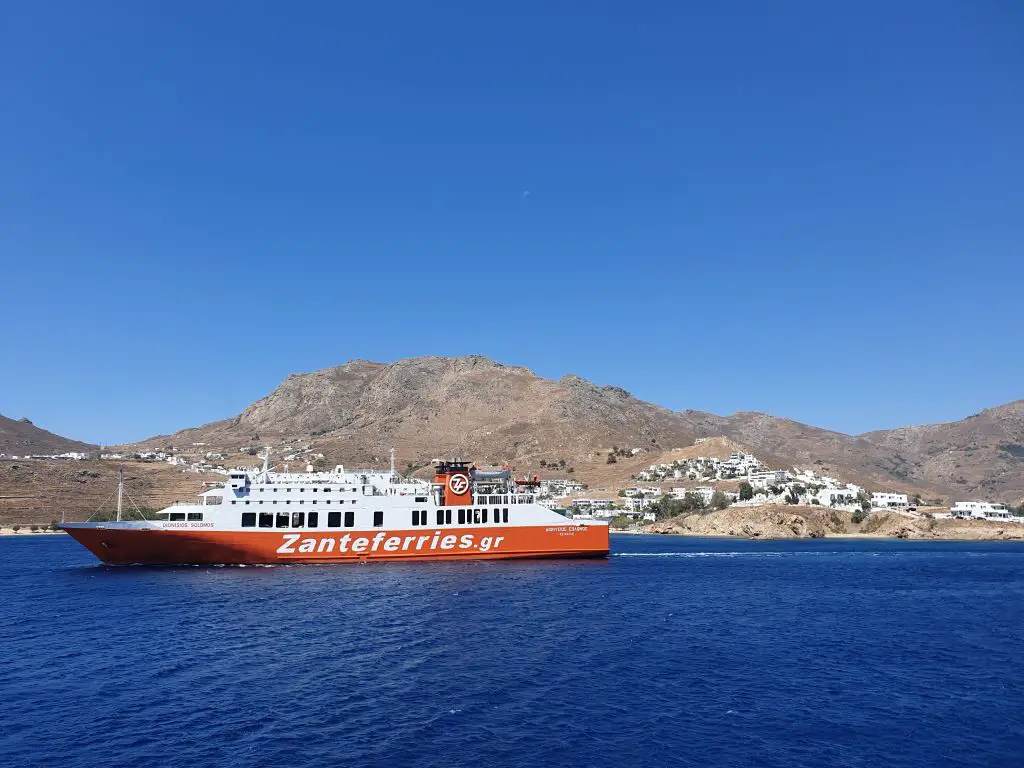
Don’t worry, the ferries are more than capable and some of them are actually quite luxurious. Each island has its port town (or towns if you’re in Amorgos) and there are regular ferries that connect the island to other islands.
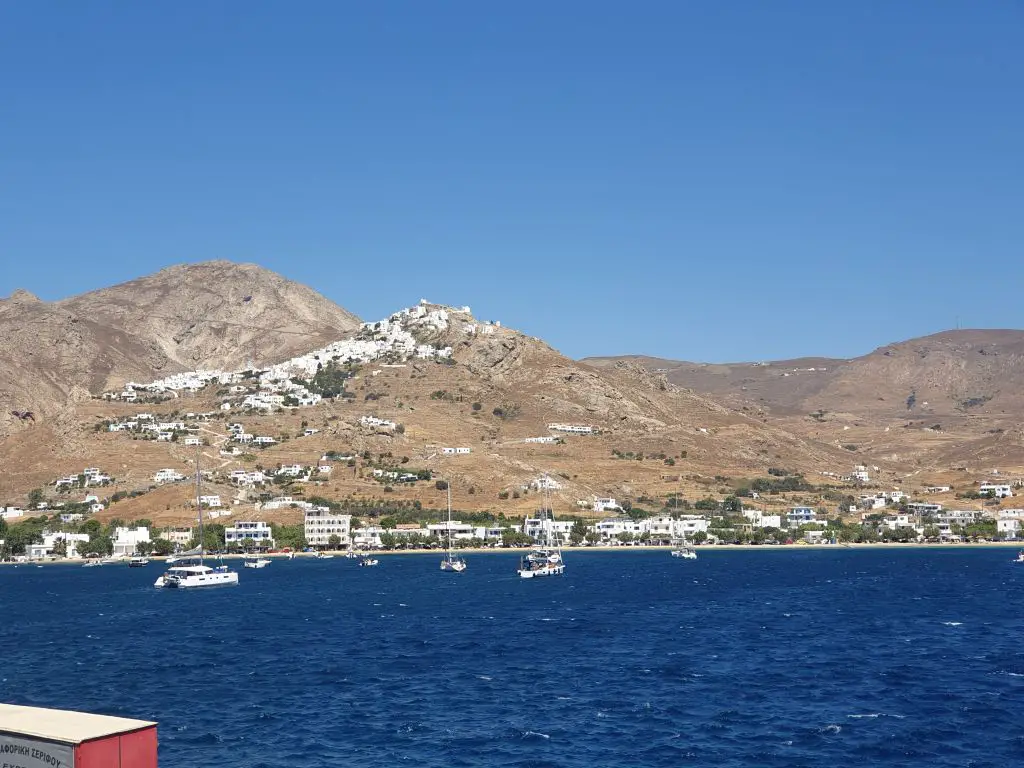
I’ve written a very comprehensive guide about Greek ferries so make sure to read that if you are keen on an island hopping adventure!
The White Cycladic Houses
In most of the Cycladic islands, houses were painted white to reflect the harsh summer sun. So, it started for let’s say “bioclimatic” or “ecological” reasons, to make houses a little more heat resistant, with the knowledge people had at the time. All Cycladic island houses were quite well insulated, although with primitive means — walls were built with stone (enduring heat and cold very well ) while roofs (vaulted or not) were insulated too, with a combination of wood, mud, hay, and pozolanic (volcanic ash) cement.
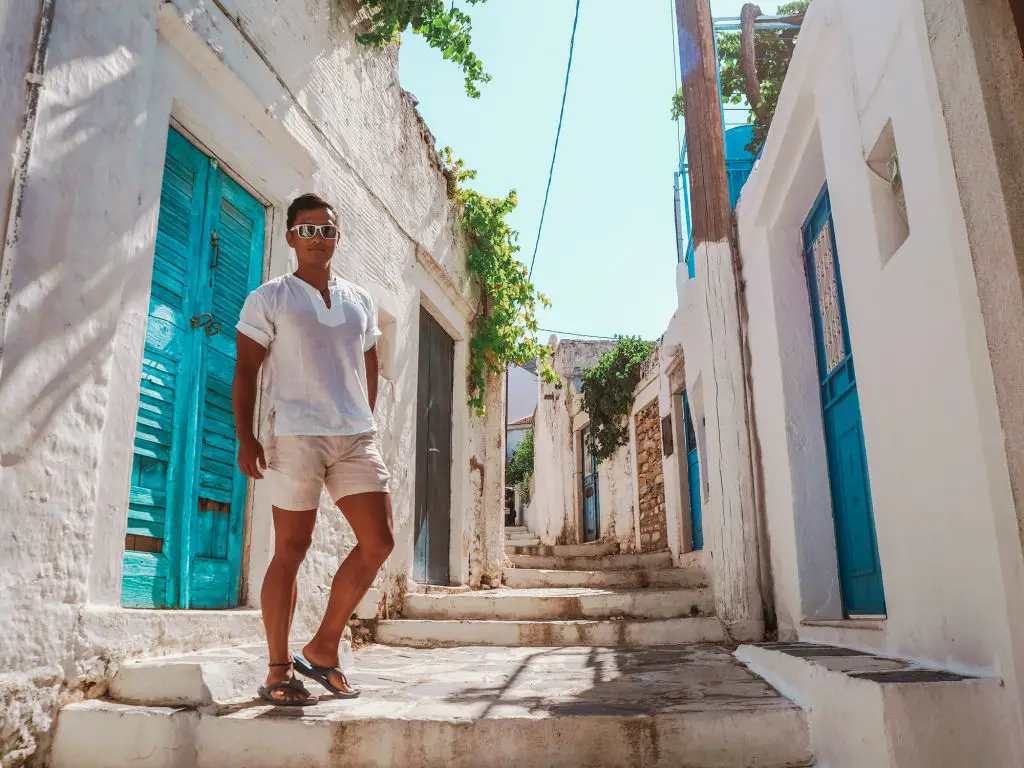
One thing to note is that walls were not painted with white paint, since white paint was fabricated and mass-produced all around the world,only after 1905 – 1915. Instead, asbestos was used to produce an almost white color. It was also used as a cheap material for many other purposes, like painting tree trunks to kill pests, making the edges of pavements more visible, ornamenting small roads, etc. This was NOT the case in Santorini but in most other Cycladic islands.

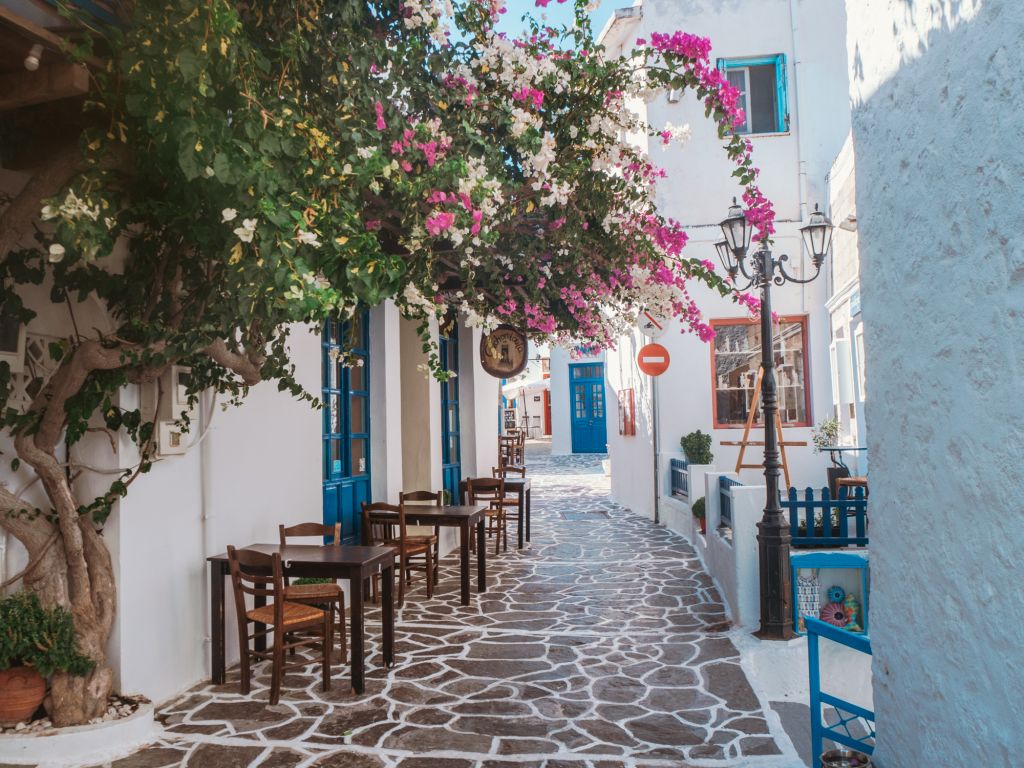
When is the best time to take photos?
No trip to the Greek islands is complete without taking some amazing photos of the whitewashed stone houses, the cobblestone streets, and the pink Bougainvillea flowers.
i took so many photos, saw so many villages that really just look the same but it never got old!
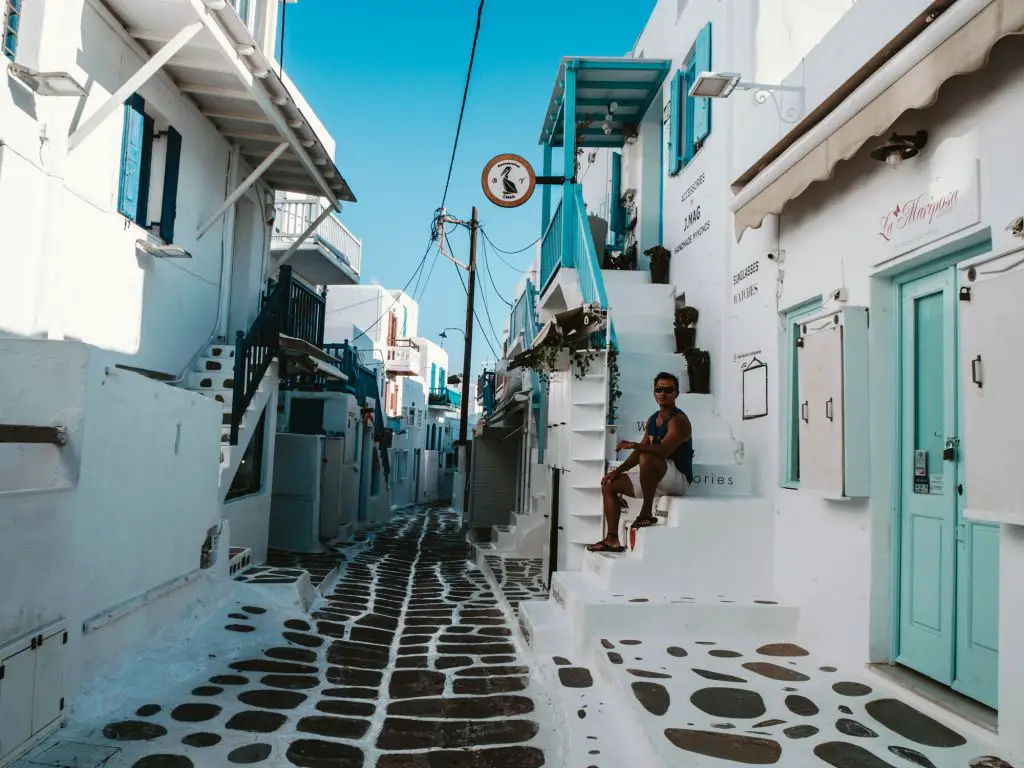
The best time to take photos of these villages are in the middle of the day. This is because you want the white of the buildings to really show and this is best when the sun is at its peak. Also, when the sun is at its highest point, there are less shadows on the walls of the buildings which allow for better photos in my opinion. Generally, there will not be many people walking around in the middle of the day either as most people will be at the beach since it’s too hot to be walking outside.

Of course, there is no bad time to take photos and they will be Instagram worthy regardless, but these are my tips. Brave the heat and get the best photos!
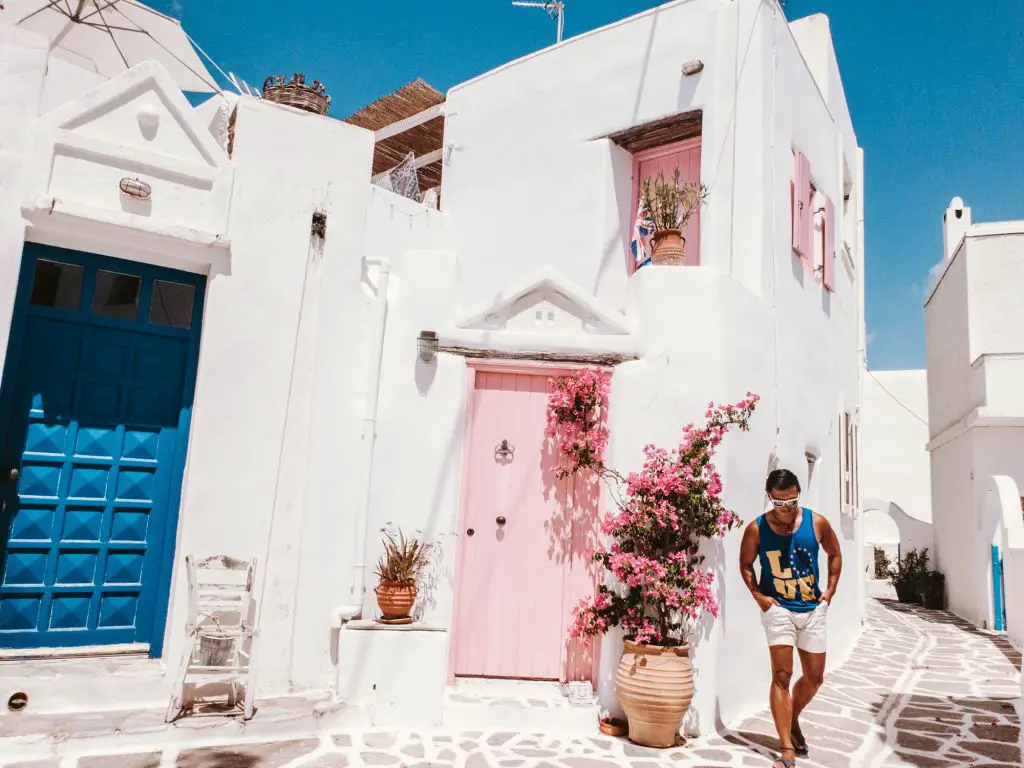
Getting around when you’re on the island
Once you’ve made it to the island, how do you get around? While the islands are mostly quite small, it’s not tiny sized like Caye Caulker in Belize where you can walk or bicycle around the entire island in short time. Even the smallest of the Cyclades in Folegandros is around 10km by 3km which is far too big to walk.
Public Transportation
Every island has a public bus that will take you between points of interests. Usually these are the main towns in the island as well as some of the more popular beaches. In Folegandros for example, there was really only one town of interest so the bus stopped at all the various beaches in the island. In addition to the bus, there was also a public ferry that took passengers between beaches, many of which are difficult to access by land.

The buses are old school but they are reliable and cheap. They normally don’t come very often (maybe once an hour) so if you miss it, you will be waiting for quite some time. I paid around €1.50 to €2.00 per ride when I did take the buses. If you’re two people, then it’s actually cheaper to just rent a scooter since a round trip bus for two people will be €8 or so which is about half of what a scooter costs per day.
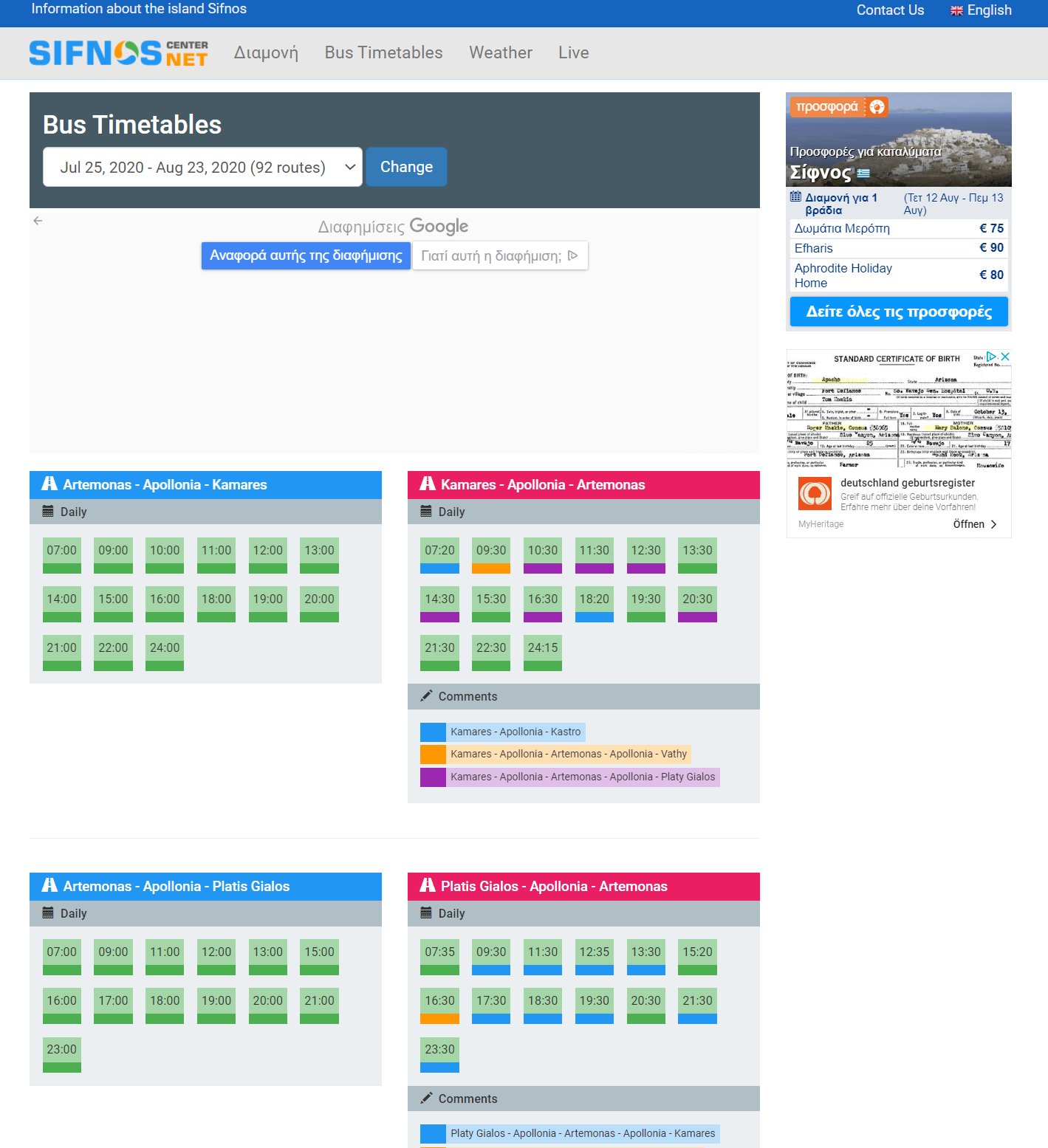
Renting a scooter in Greece
Renting a scooter can probably take up its own blog post with all the intricacies around. I’ll try to keep it simple.

By far the best way to see the islands is by scooter. I rented a scooter on pretty much every island I went to (ATV on a few) because like I said, there’s just no better way to do it!
A scooter is quite cheap, uses very little fuel, is small so parking is never an issue, and is fast enough because you never travel more than 70 km/h on the islands anyway.
In order to rent a scooter in Greece, you must have an EU drivers license or an international drivers license with motorcycle endorsement. While other countries may be lax about these rules, Greece does not mess around. They enforce and check this without fail. If you have an American drivers license for example without any international permit add-on, you will not rent a scooter full stop.
If you have an EU drivers license, you will need the AM, A1, or A designations (check the back of the card). Which one you have will determine the size of the motorbike you can rent.
- AM – 50cc only
- A1 – Up to 125cc
- A2/A – You can rent a motorcycle at this point so any scooter will do you fine
I only have the AM which means I can only rent the 50cc scooters. I did have one shop in Milos somehow misread my license and gave me a 125cc instead. Not sure if they intentionally did that or if I just got lucky.
Scooters in Greece cost roughly €15 per day for a 50cc and €20 for a 125cc in the peak summer months. In off season, you can expect a 25% reduction in price. Prices can be negotiated a little bit but typically they are set because the companies don’t want to engage in a price war to the bottom with each other.
50cc vs 125cc scooters
If you are one person, a 50cc is enough. The scooters are small but powerful enough to get you where you need to go. I had 50cc most of the time and could get up hills without issue. On the steepest of hills, it maxed out at 30 km/h. For two people, 50cc is borderline too weak. I think for flat surfaces it would be okay but you are risking it if you are going up a steep hill.
A 125cc will be more than enough for two people in any circumstance.
Rent an ATV in Greece
If you don’t have a moto license or any sort, you can still rent an ATV. However, the same applies with international drivers permit. If you have a Non-EU drivers license, you can only rent an ATV if you have an international permit. Otherwise, if you have an EU license, you just need the B category which is for cars to drive an ATV.
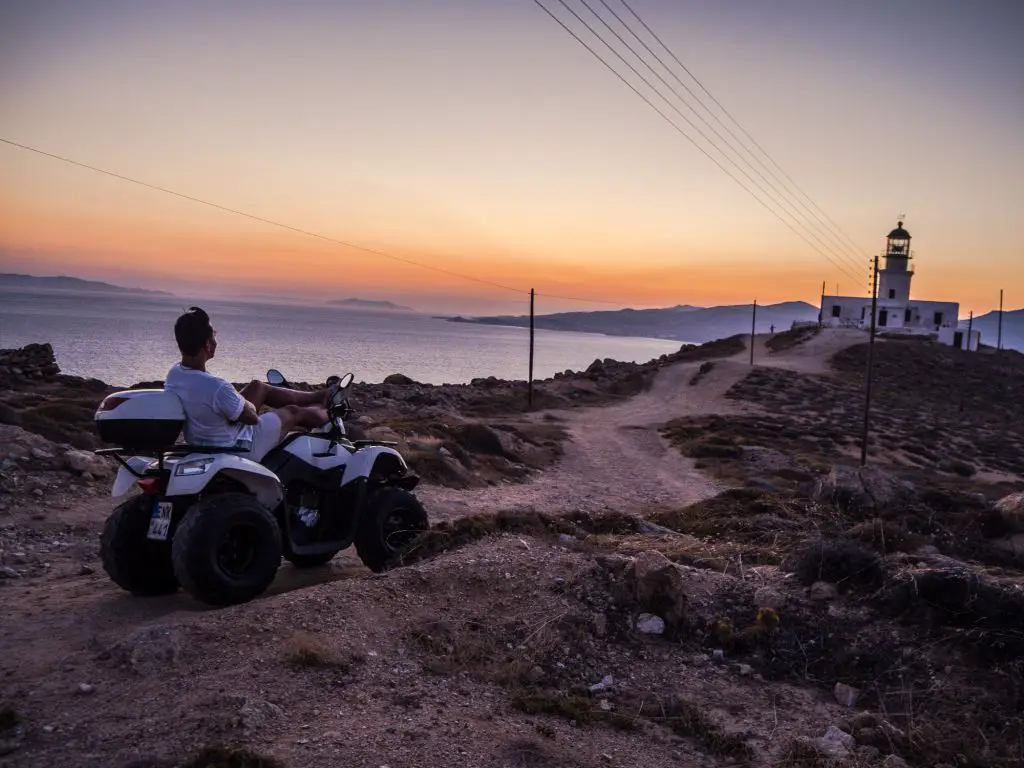
I rented an ATV in Mykonos and it was plenty of fun I must say. Since they are much bigger machines, you’ll want to rent at least the 170cc machines. These are plenty fast enough for the islands and can do hills no problem even with two people. Some places rent 50cc ATVs but I would not mess with these as they will be questionably strong enough for 1 person and absolutely not strong enough for two people. I’ve heard of couples pushing the damn thing up a hill. If you’re feeling like a boss, you can go for the 400cc ATVs which can go past 100km/h but you will never reach that speed on the islands anyhow.
The price for a 170cc ATV is roughly €30-35/day in the high season with a solid discount in the off season.
Do you need to speak Greek?
The short and long answer is no. Greek citizens are required from a young age to learn English and it shows off well. The younger generation and even most of the older generation can speak English very well. As you are also traveling to the Cyclades which caters to loads of tourists from all over the world, people will speak English no problem.
Of course, it never hurts to learn some local phrases. And by phrases I mean simple words. After two months, the extent of my vocabulary was still just
Yassos – Hello
Kalimera – Good morning
Kalmispera – Good Afternoon/evening
Efkaristo – Thank You
Yamas – Cheers
Opa! – Used for everything it apepars.
Drinking Water in the Cyclades
Unlike the capital Athens, and probably much of the mainland where drinking water is perfectly drinkable, no tap water is drinkable in the Cyclades islands. This was a bit of a surprise to me but every hotel and guesthouse will tell you to not drink the local water.
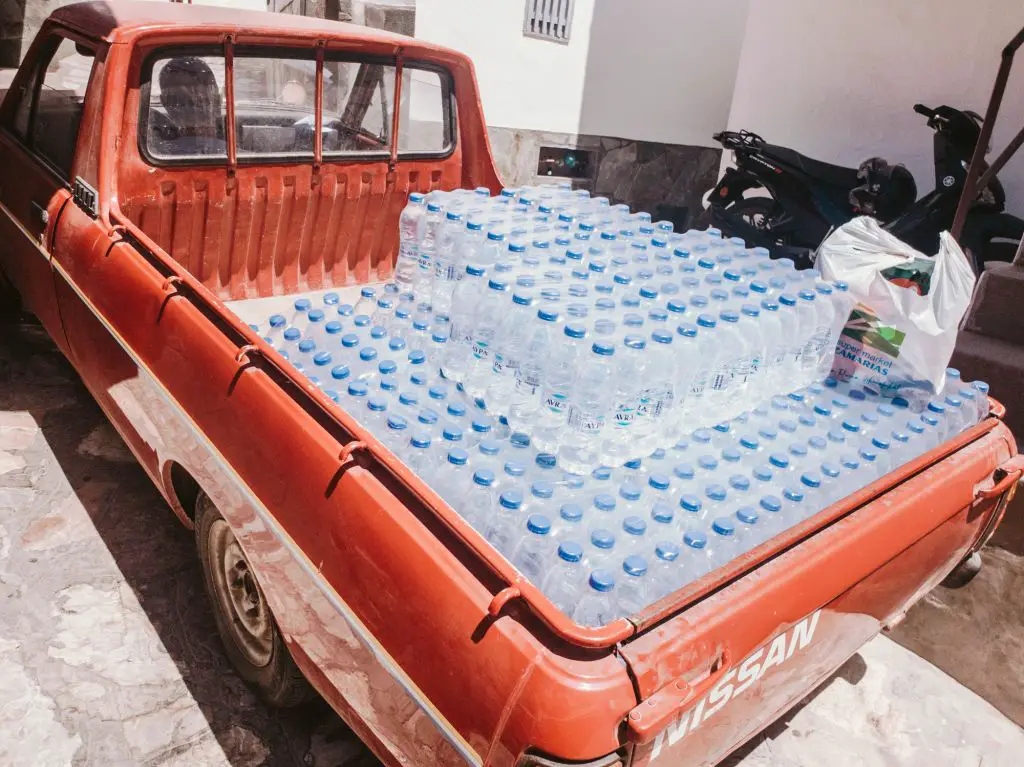
This means you will be constantly buying bottles of water at the local grocery store or mini market.
While this is annoying, the water is very cheap here as I could get a 6 pack of 1.5L water for €2-3.
What’s the budget for the Cyclades Trip
A trip to the Cyclades is not cheap. If you’re an avid backpacker or budget traveler, the Cyclades especially in the summer months will not be kind to you. While it’s not expensive per se, it is probably one of the most expensive parts of Greece to travel to. You have to remember; small island, imports everything, lots of tourists, higher prices.
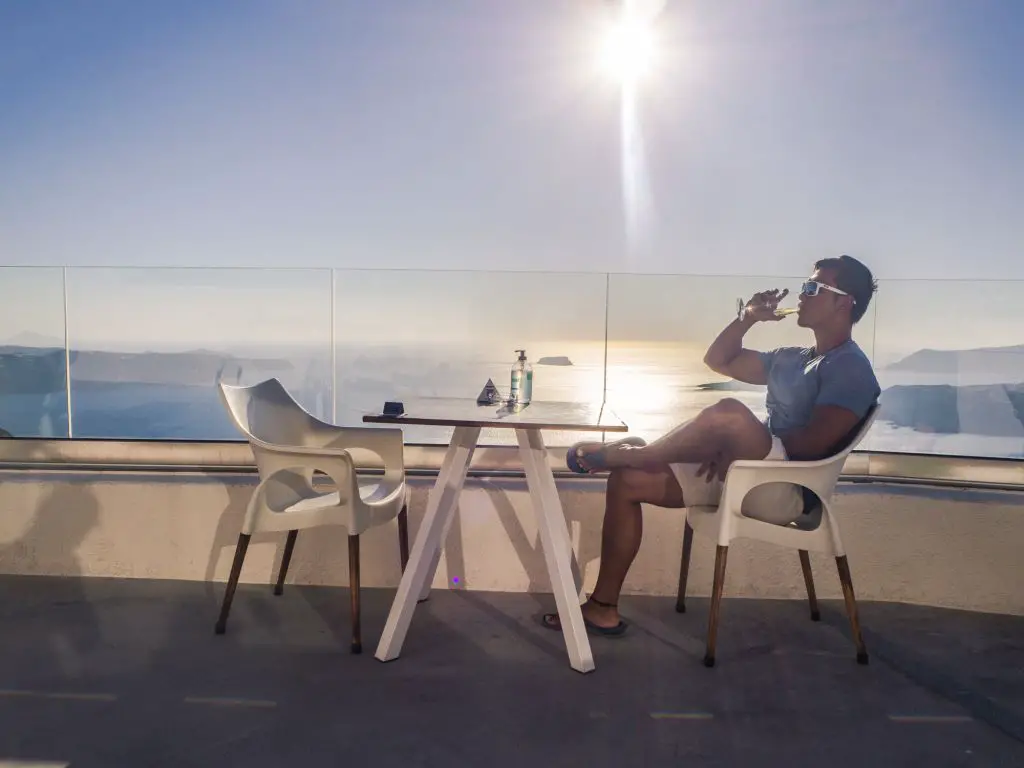
Nevertheless, there are tons of budget options available and even hostels on the bigger islands like in Mykonos. Some islands like in Sifnos even offer a camping option for €15 a night.
Traveling in the summer months
If you’re traveling in the summer months, I would prepare to spend more as it’s the high season and everything will cost more. Assuming you want to stay in a halfway decent accommodation, rent a scooter, and enjoy the Greek food outside of gyros and souvlaki, I’d budget something like this:
- Accommodation: €50-100 a night
- Scooter: €15-20 per day
- Food and drinks: €25-50 per day
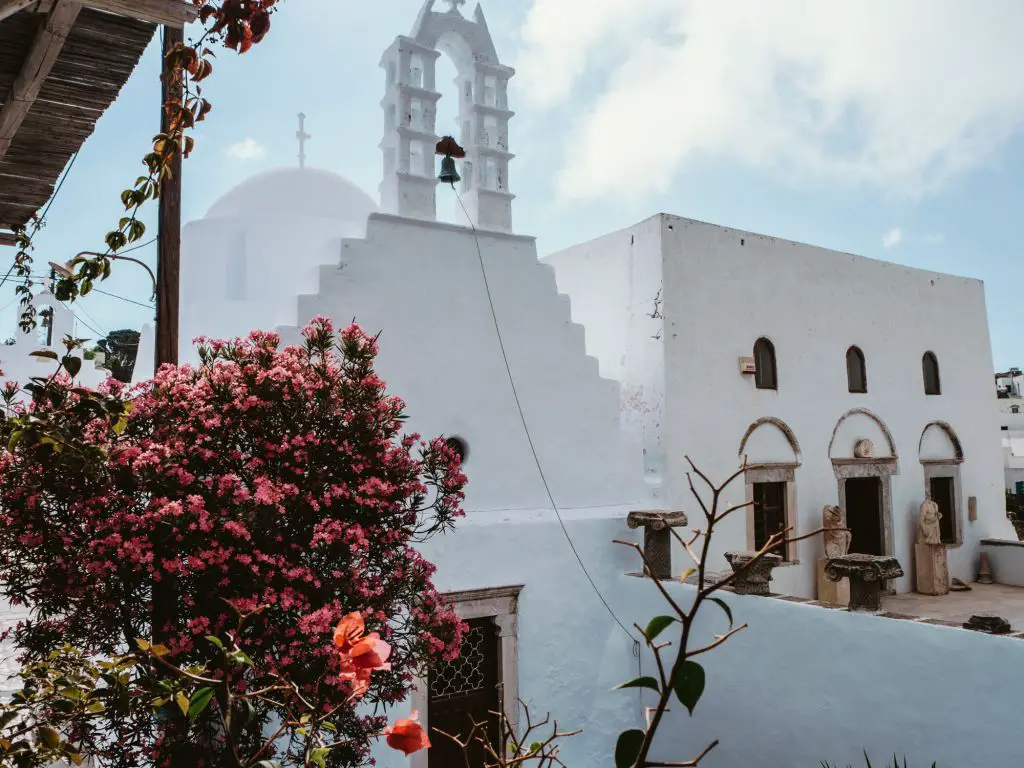
This means you should budget anywhere from €85 to €170 per day. Of course you can spend much less if you don’t want to rent any scooters and eat gyros every day (they are only €2.50 or so each). However, I think the accommodations are the main stumbling block because there are just not that many cheap options.
If you are at last two people, you can expect to spend less on the accommodation since you can split it. Nicer Airbnbs can be had for €150 a night during the high season and I never spent more than €50 for a dinner with two. Of course, add in some sunset cocktails and the works and your budget will increase quickly.
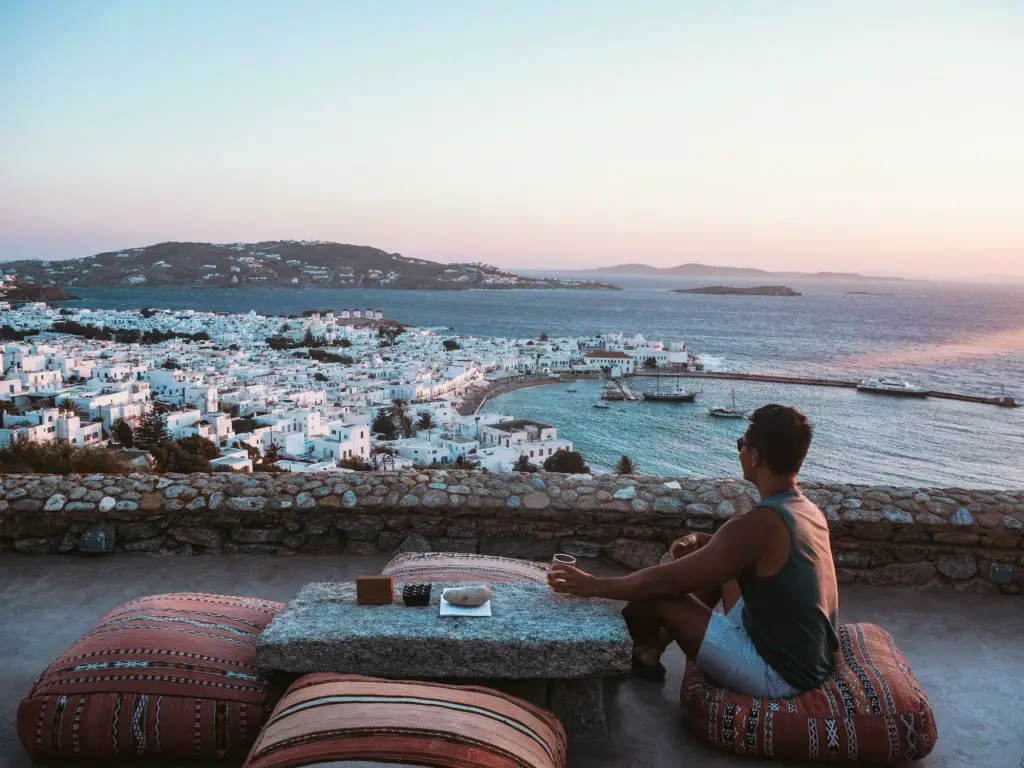
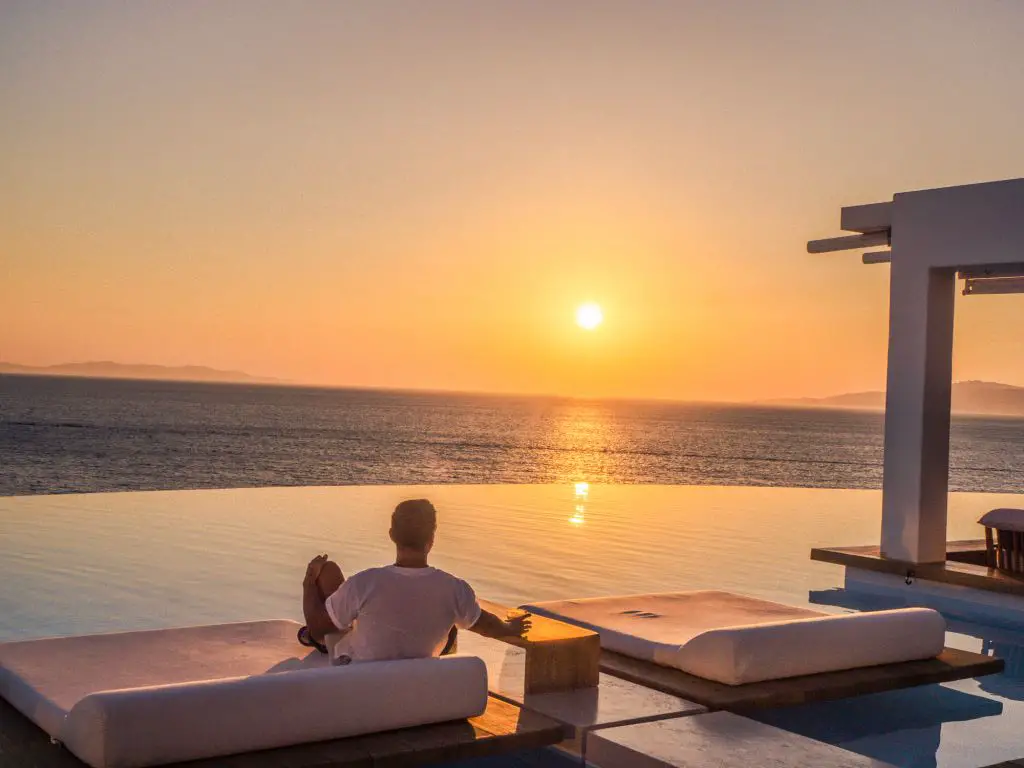
Traveling in the shoulder seasons
If you travel during Spring or Autumn, the accommodations will be much cheaper. You can find some legit options for significantly less. Food and drinks will still be the same but your scooter or ATV rental will be a good deal cheaper.
As a solo traveler, you could probably get away with spending €60 at the low end, but €100 a day will be quite comfortable.
In the end, the Greek islands do not have a backpacker vibe like say in Caye Caulker, Belize. It’s more catered to families and wealthier clients because let’s face it, they want the money!
How many days to spend in an island?
Well the right answer is as long as you need to really get a feel for the island. Of course, this is different for everyone and if you are time constraint like the rest of us, then this is also a big issue.
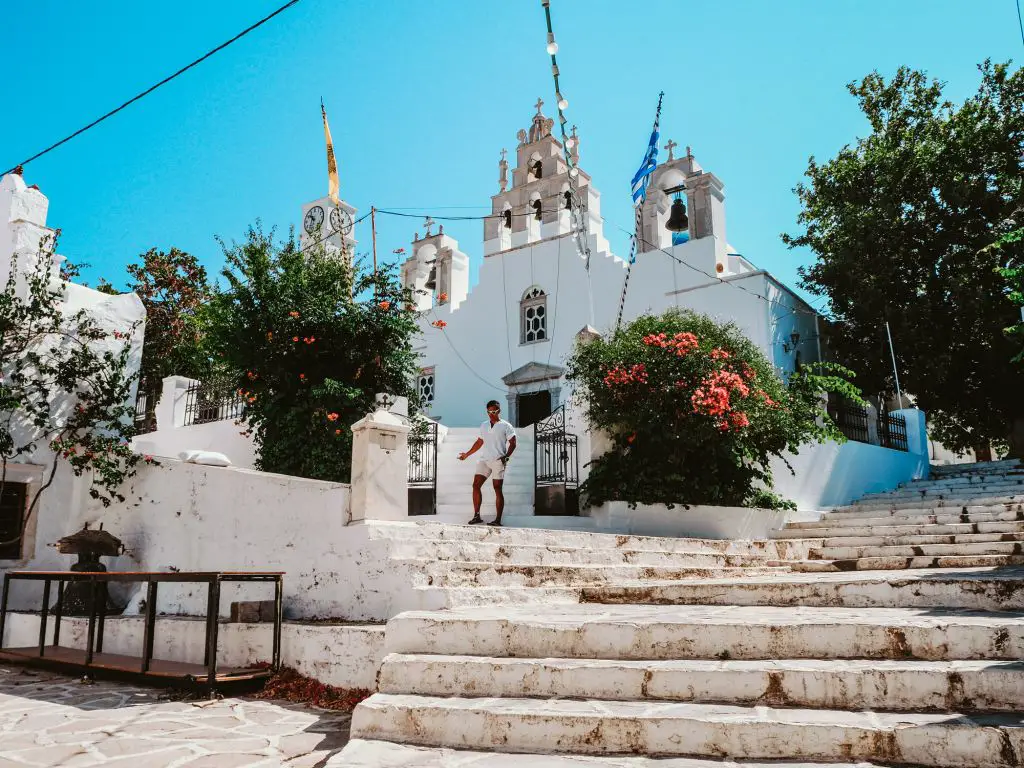
After visiting a dozen islands around Greece, I think the right number is somewhere between three to five nights. Of course more nights is also welcome but fewer than 3 nights per island is not doing it justice in my opinion.
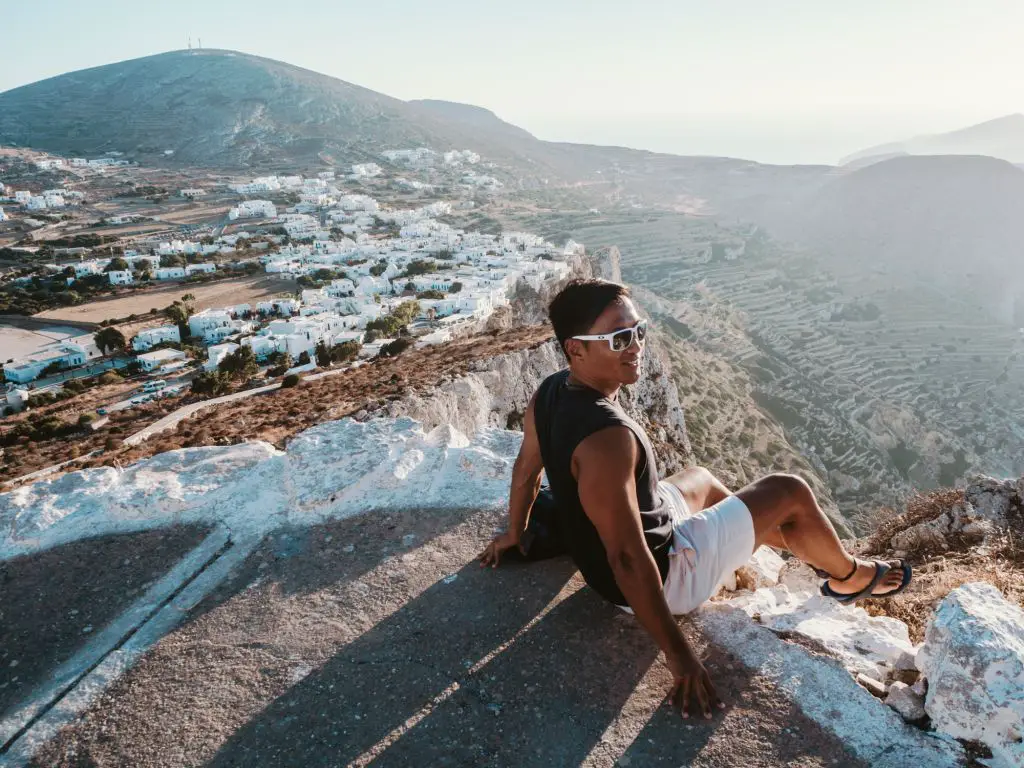
The bigger islands like Zakynthos and Kefalonia definitely warrant four or five nights just due to the sheer size. Smaller islands like Mykonos, or Folegandros can be seen in three nights without issue.
In the end it really depends on what you’re after. If you just want to walk around the villages and see the main sights, then two nights could even be enough. If you really want to take it a more reasonable pace, see the main sites, and enjoy your stay, then at least 3 nights.
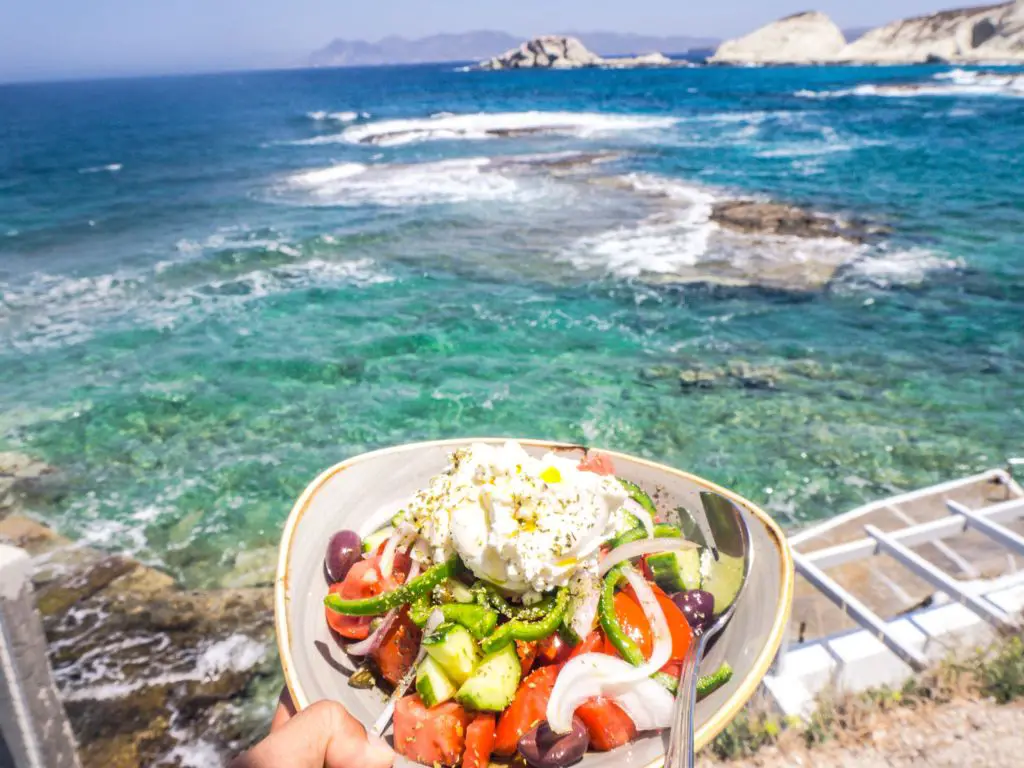
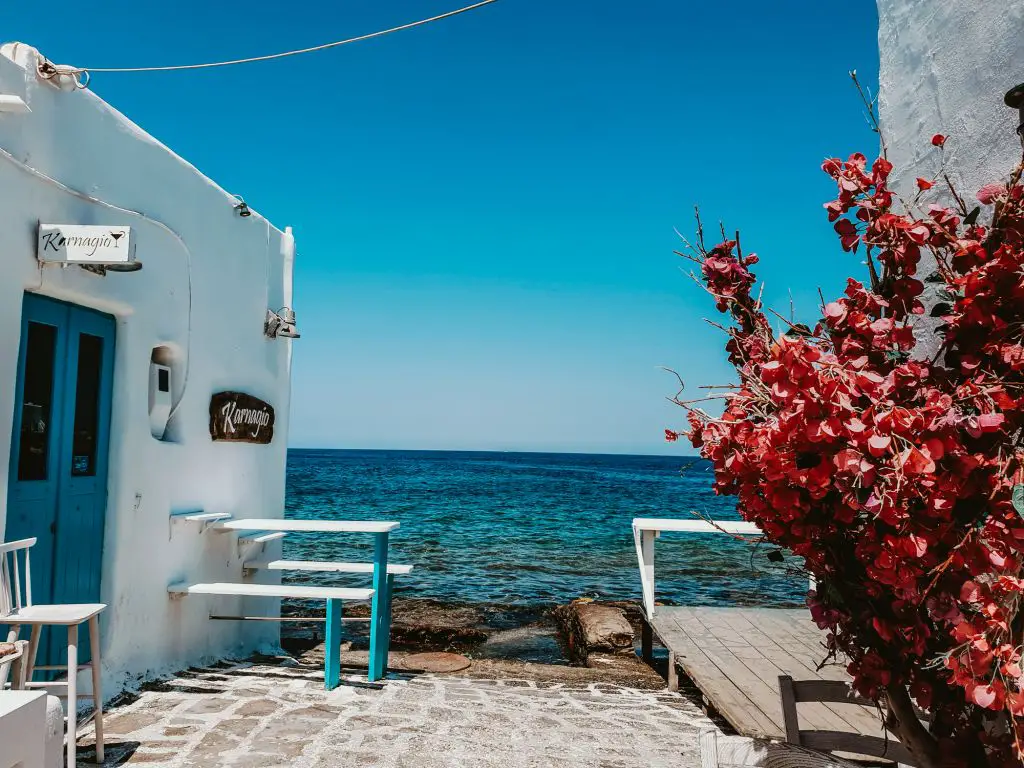
The bigger islands like Paros and Naxos are probably better served with four nights in my opinion just because there is so much more to see.
Go to the Beaches of the Cyclades
The beaches in the Cyclades are famous around the world. However, I am not crazy about the beaches here. I went to countless beaches but they are typically my style. Most beaches get very busy in the summer months and many are the sunbed and umbrella style beaches where you can see the sunbeds for miles. Perhaps I’ve just become too spoiled traveling the world and visiting sandbanks in the Maldives!
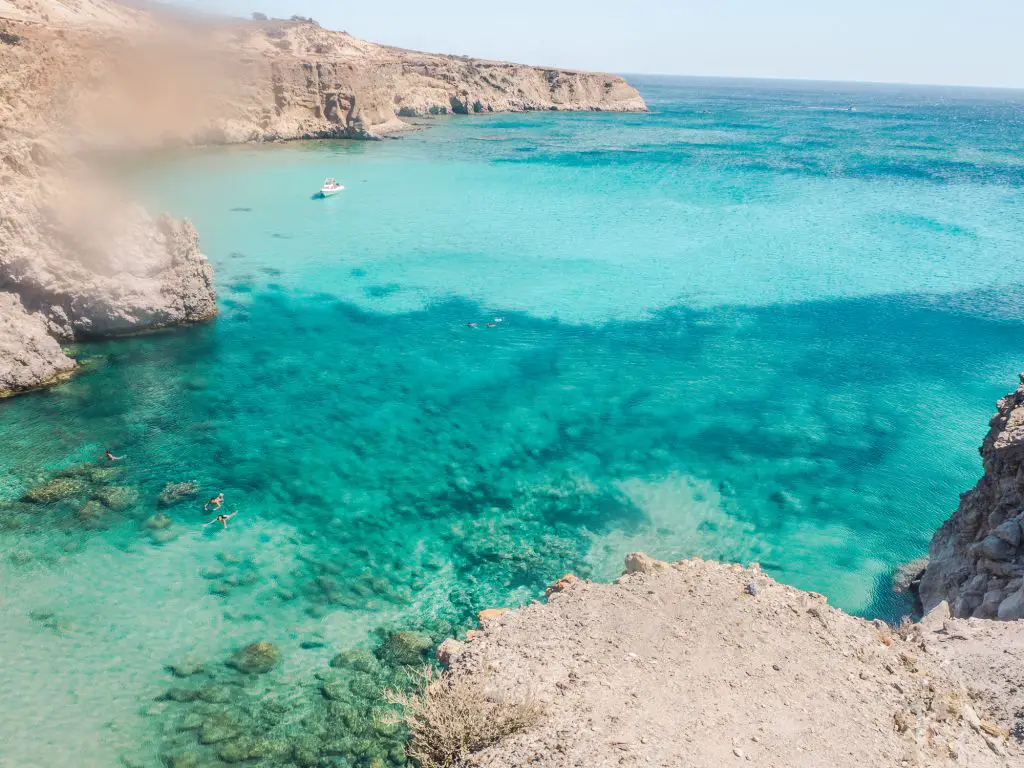
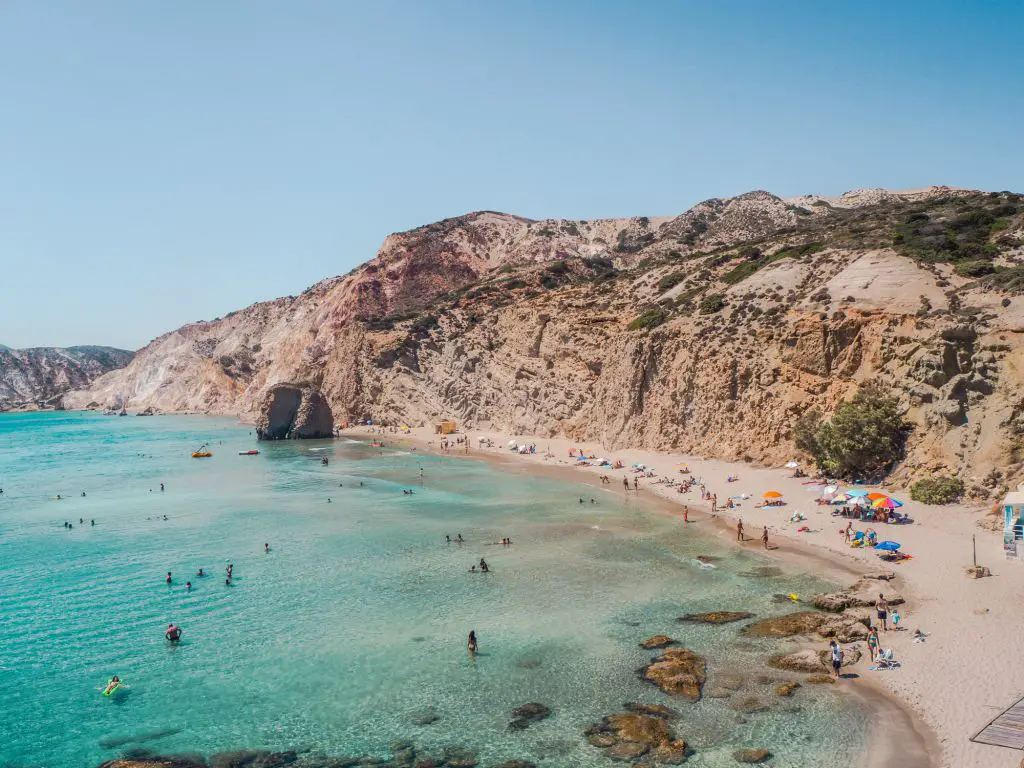
The beaches themselves are nice but nothing out of this world. Some beaches are sandy, others are pebbly, and others are just rocky. The water color is deep and beautiful but it’s nothing I’d write home about. In fact, the best beaches in Greece I visited were in Crete and the Ionian islands of Kefalonia and Zakynthos. Nevertheless, many many people come here just for the beaches and love the sunbed scene so if this is your style, then you’ll love it.
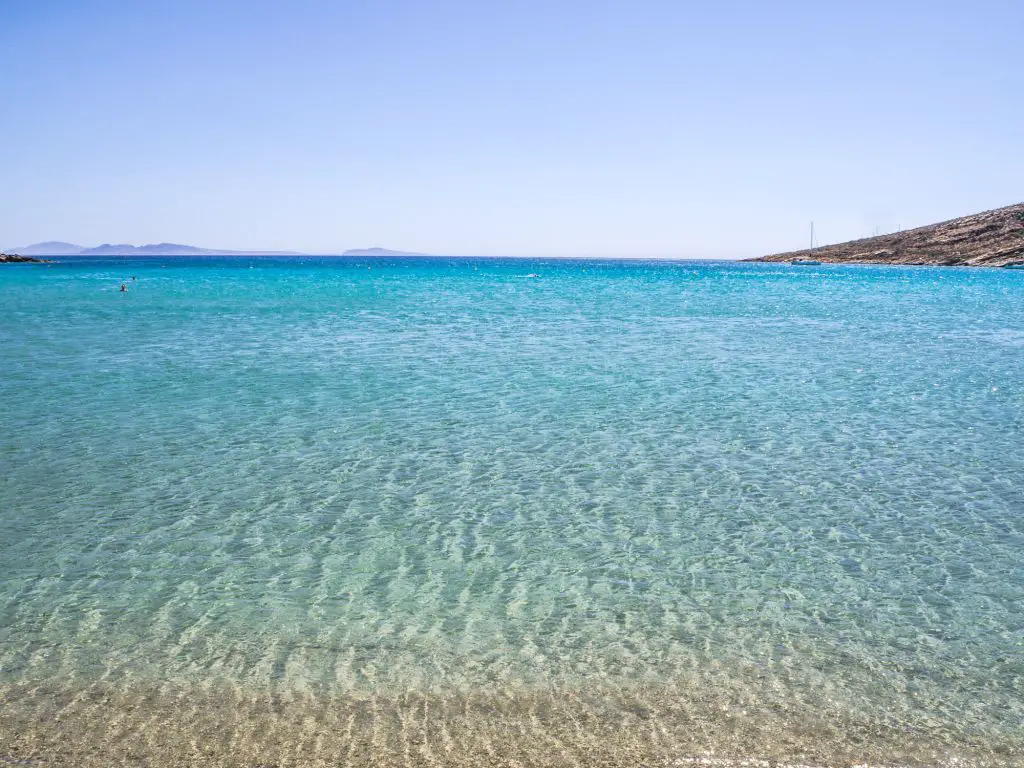
Where to stay in the islands
Another crazy subjective question that is not a one answer for all. There are no shortage of accommodations on these islands for any price level. It really just depends on what you’re after.
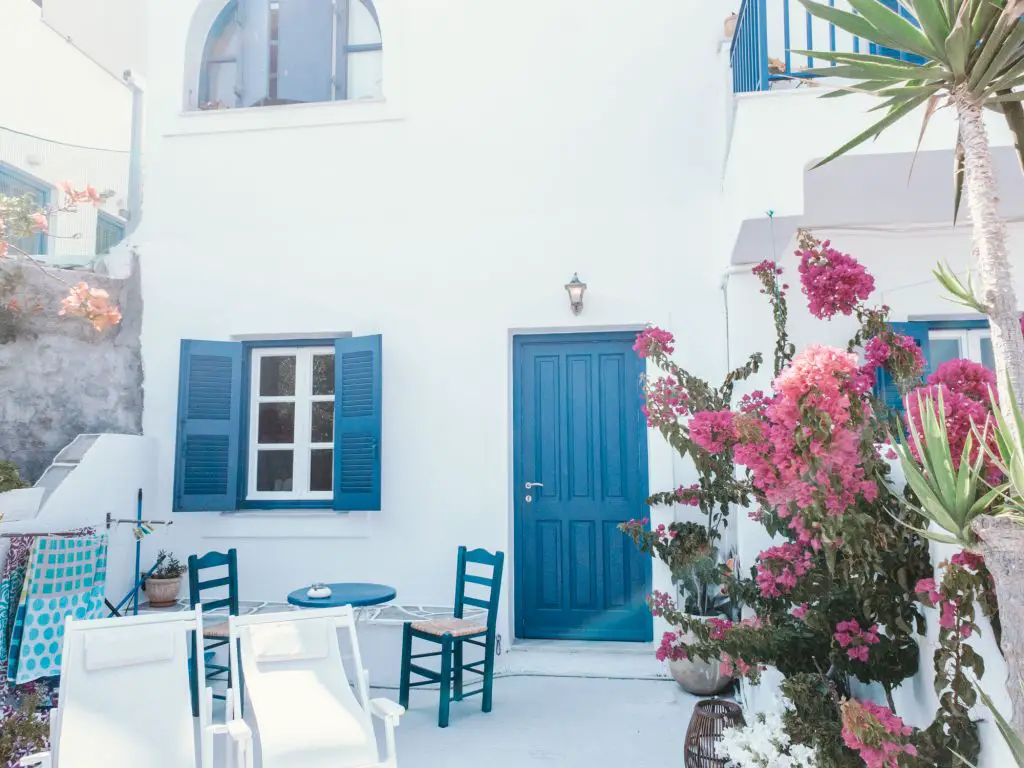
Want ocean views? A villa? or a typical cute Cycladic house? Or you are broke and need to stay at the cheapest accommodation possible? It all depends on what you are after.
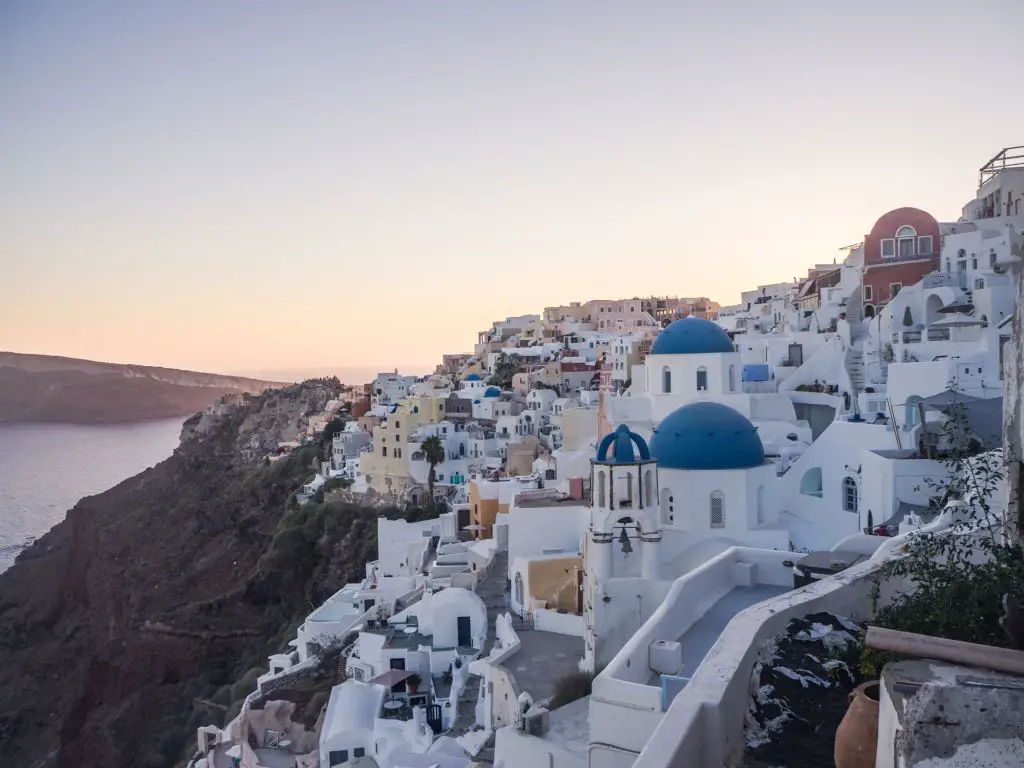
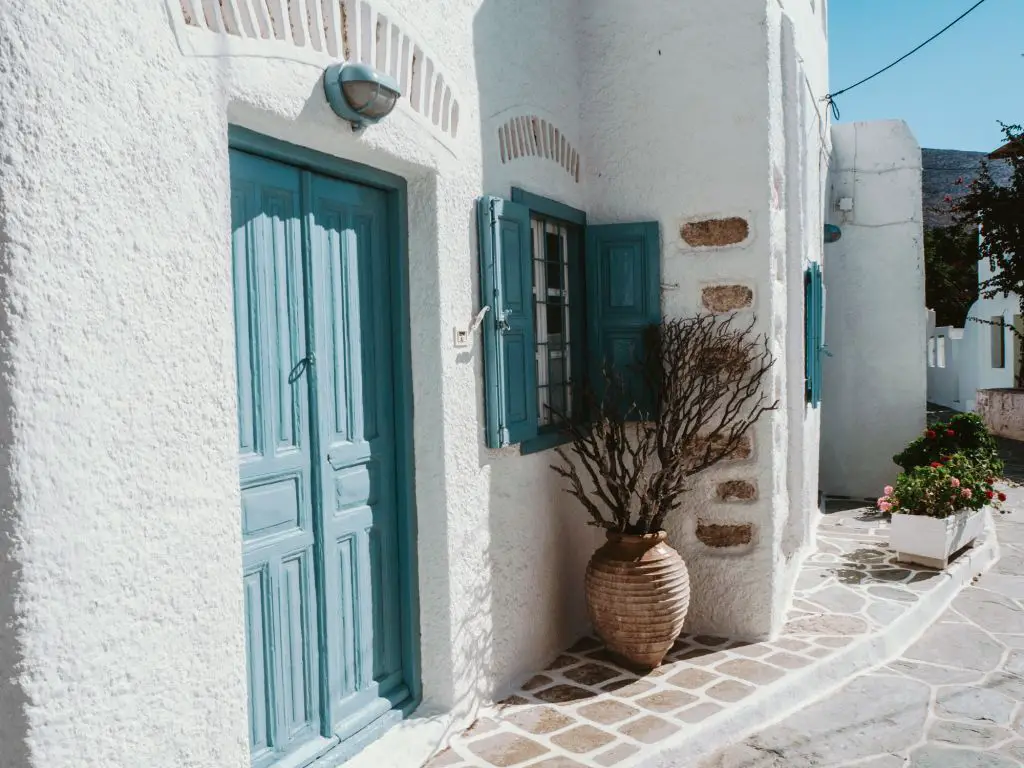
Typically, if you’re a solo traveler, I’d recommend staying in the main town, or the Chora in many of the islands (some islands have a different name for their main town). This is because all the restaurants, bars, and typically cute Cycladic streets will be in these towns so you don’t need to go far. It’s not always the cheapest option to stay in the Chora but there is usually reasonably priced options.
The Choras of the islands are normally located away from the main port. This is because in olden times, the inhabitants of the island preferred to build their towns high up in the mountains away from plain sight so to protect themselves from pirate attacks. The only towns that have their Chora as the main port town are Naxos and Mykonos.
What to eat in the Cyclades?
Ah without a doubt one of my favorite subjects. Let’s just keep this short shall we? You will:
- Eat Greek food
- Have no shortage of delicious options
The food in Greece is one of my favorite things about the country. The ingredients are ultra fresh, delicious, healthy, and above all very affordable. The Cyclades offers all the best that Greek cuisine has along with many local twists. It’s safe to say that every meal I had started off with a Greek salad, which is probably the only reason I felt good during my trip since I consumed all my daily recommended amount of vegetables in one meal.
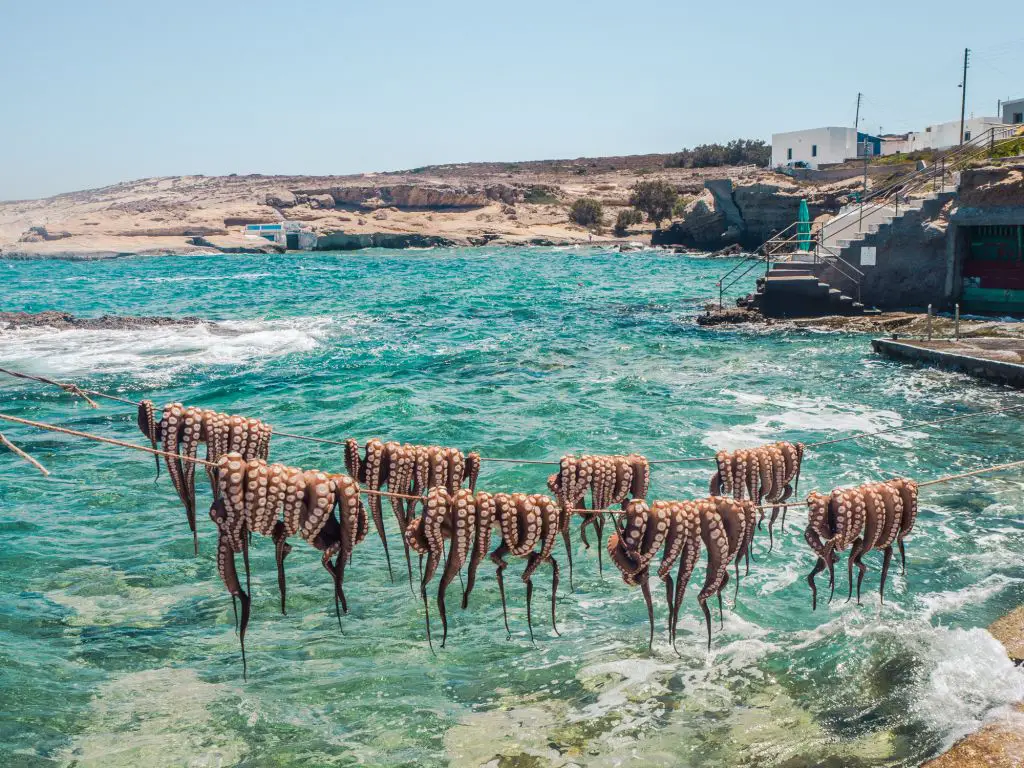
I followed this with either fresh seafood, lamb chops, souvlaki, or whatever looked appealing on the menu that day. Greek cuisine has so much variety that I never got tired of it.
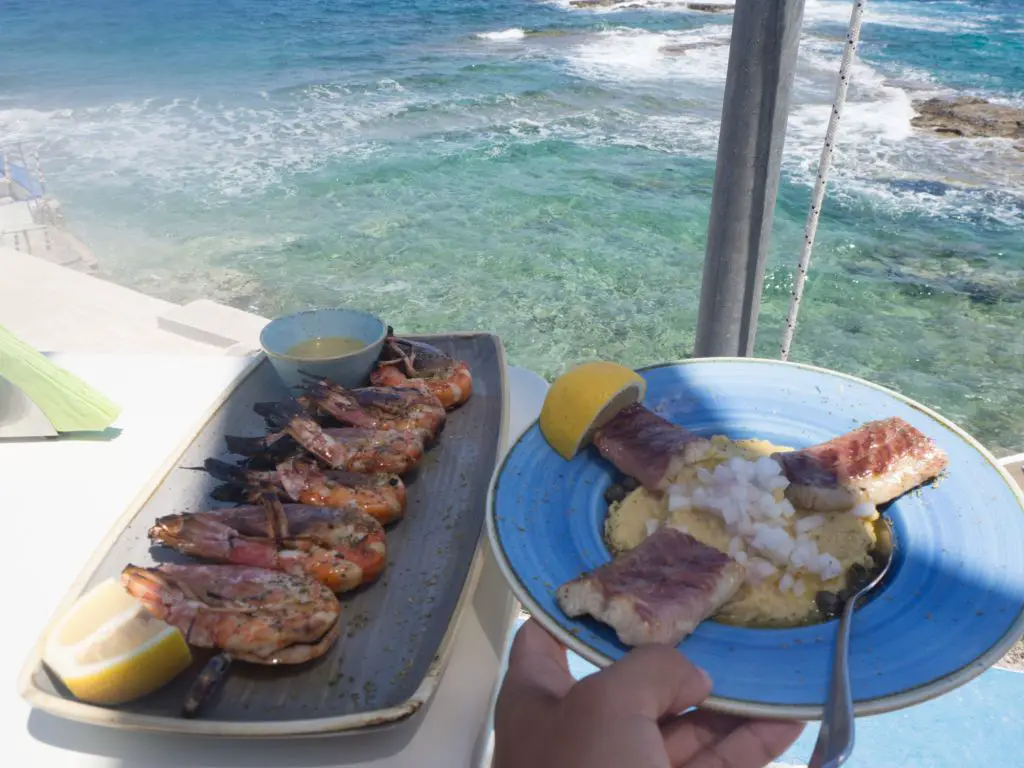
In fact, I think I had Greek food for pretty much every meal during my two months because there weren’t many other options and why would I deviate?
In general, the cost of food in the Cyclades is slightly higher than the mainland because it is much more touristy, and they have to import so much stuff since the Cyclades islands are small and generally not so arable. While the islands will grow local livestock, most other ingredients need to be imported.

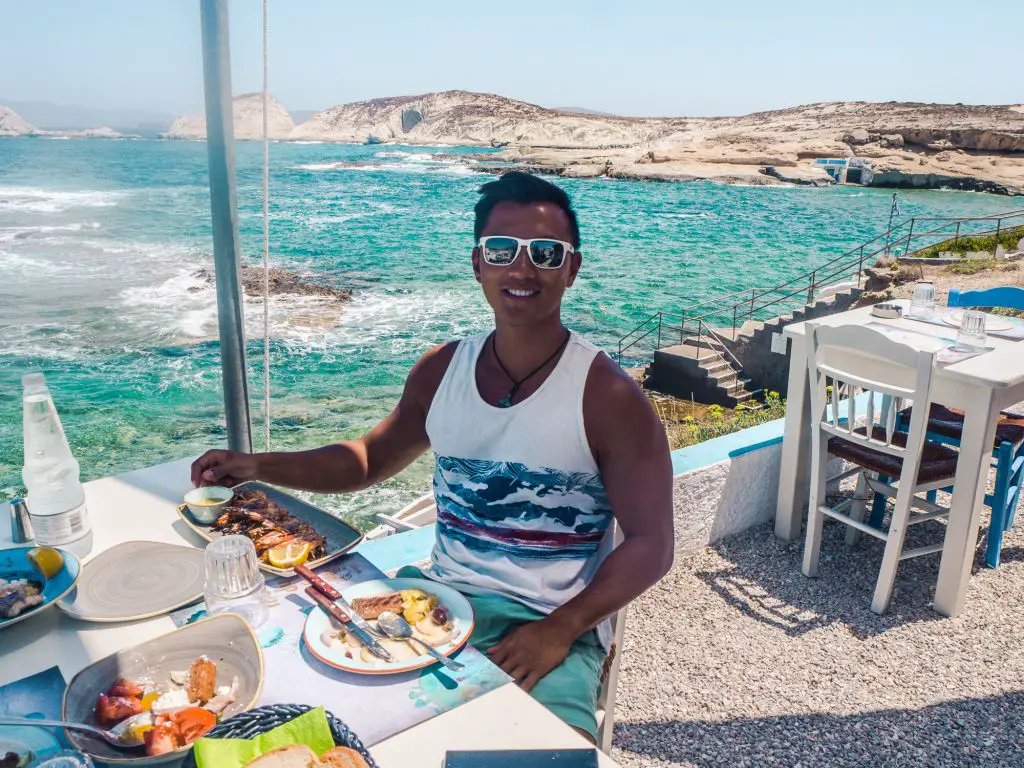
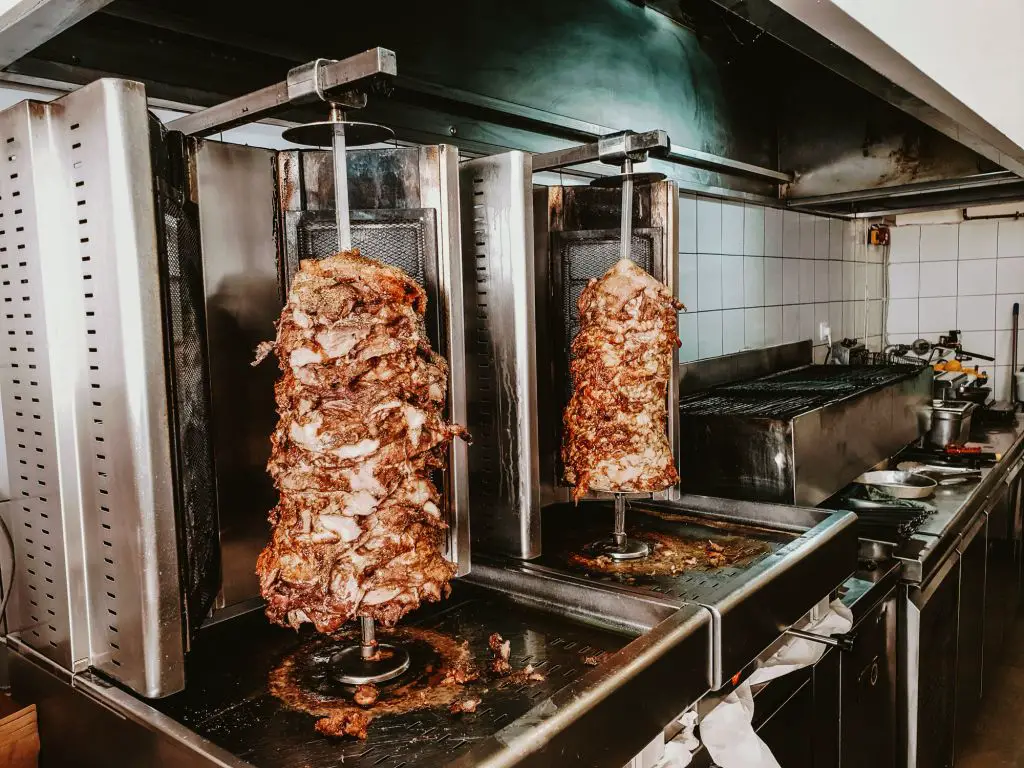
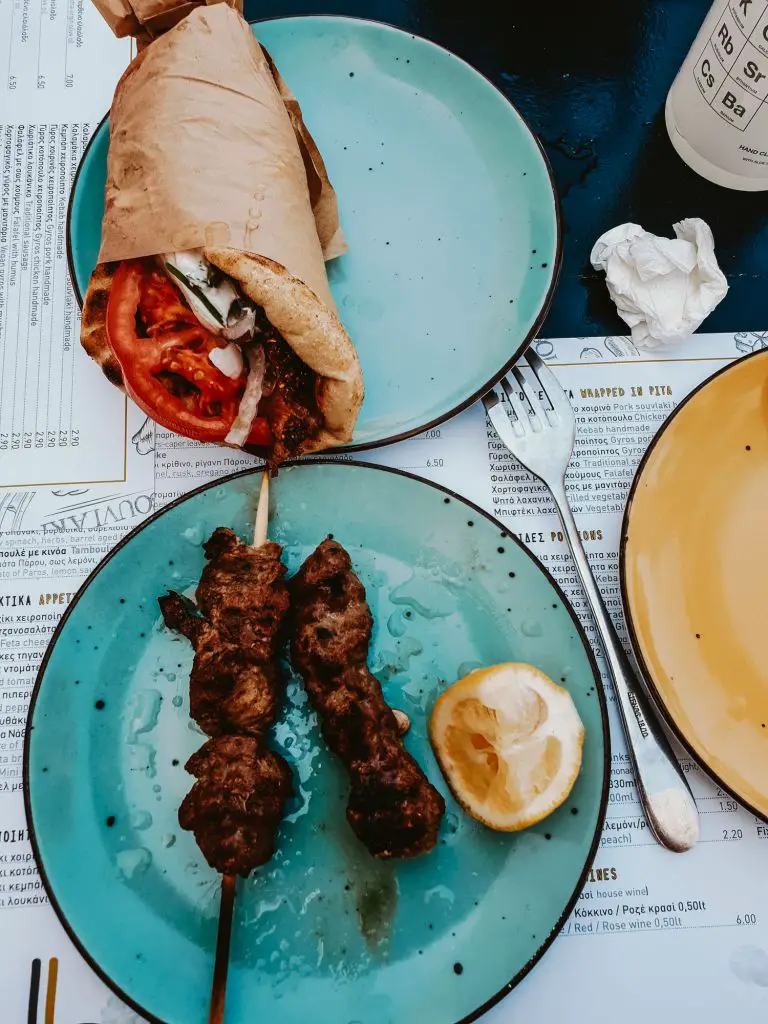
For lunch and dinner, I would generally pay around €15-20 for myself and this would include a half sized Greek salad (if they offered it), a main, and a glass of wine. If you’re two people, then you can really get the most bang for the buck as a half liter of wine is normally €4-6, a Greek salad would be €6-8, and mains were around €10-15. I never spent more than €50 for two people and this would be quite a feast. Of course, you can find those fancier places especially in Mykonos, Santorini, or Paros where you can spend €100 per person but why bother when Greek tavernas are already so delicious?
On the budget side, Greece stands above the crowd because their gyro is one of the best street food inventions ever. Sliced pork or chicken meat, along with fresh veggies, tzatziki all wrapped in a warm pita is a clear winner. Best of all? These would cost between €2.50-€3 which means you can eat super cheap if you want and still not sacrifice on taste or quality. My lunches would often be a gyro pita with extra souvlaki meat skewers and I’d pay €5-6 for lunch every day. Total bliss.
Anyhow, did I miss anything? Probably. Let me know if you’re planning a trip and have more questions in the comments!



